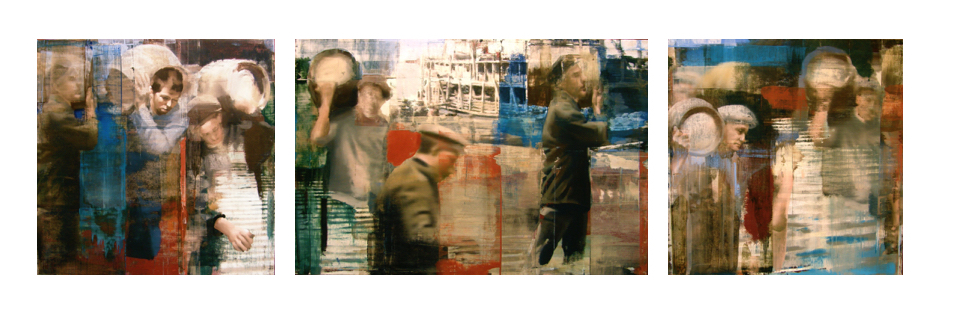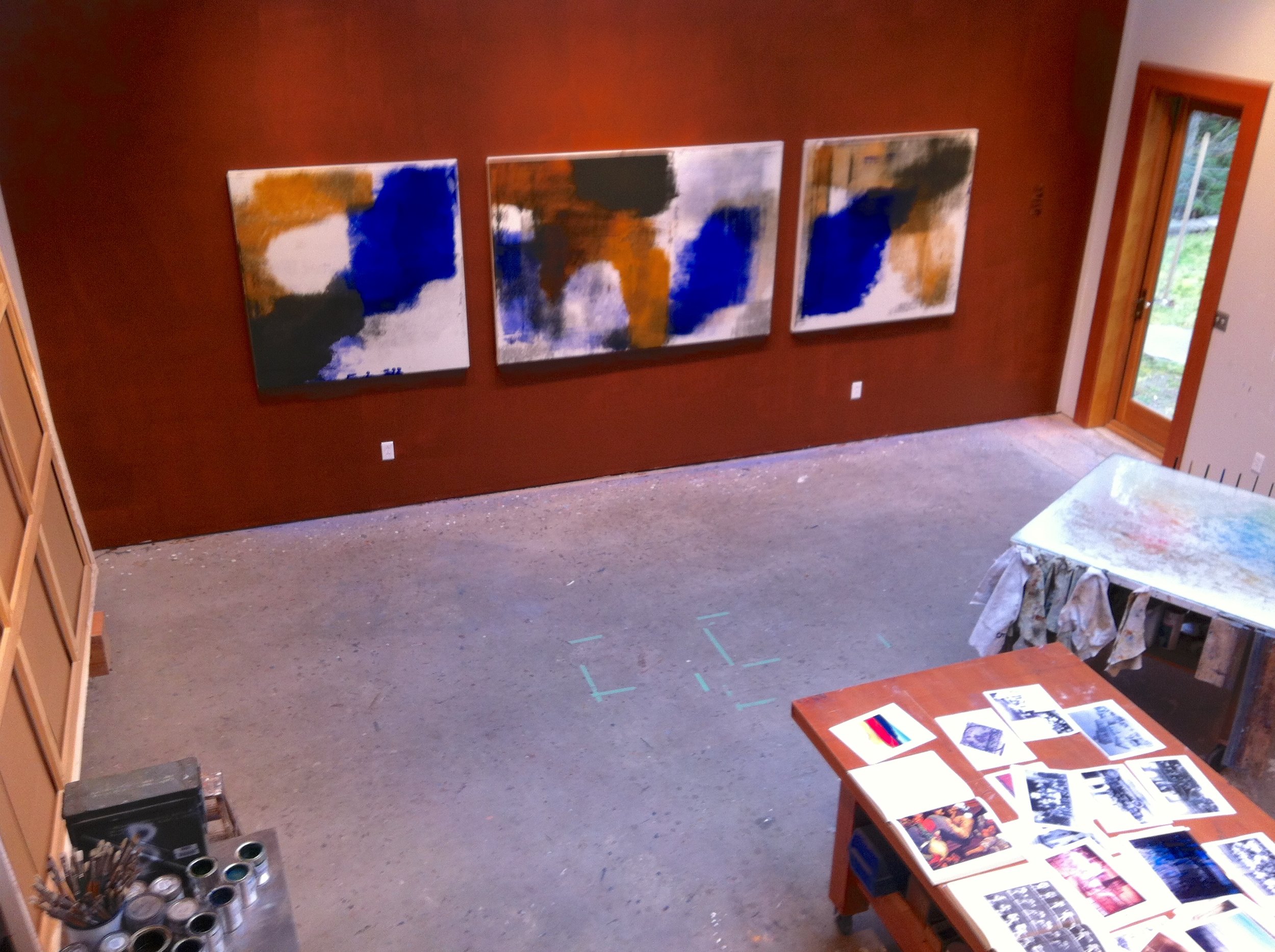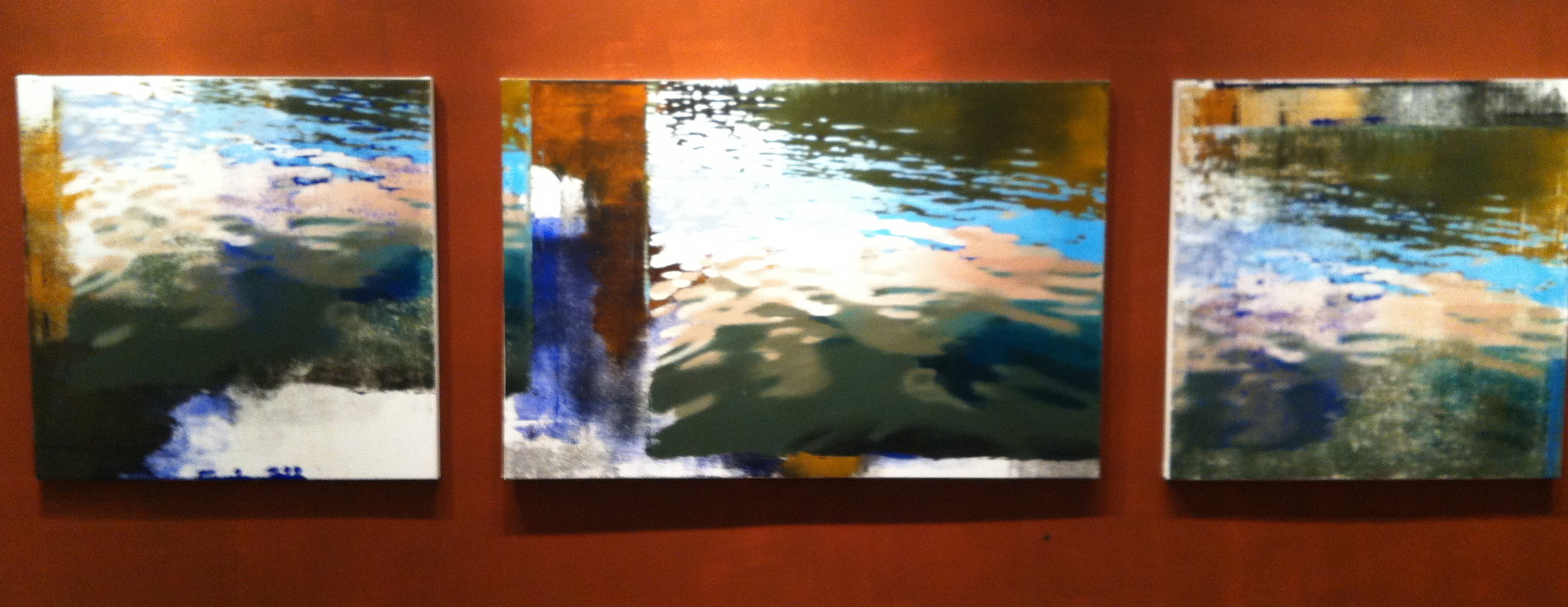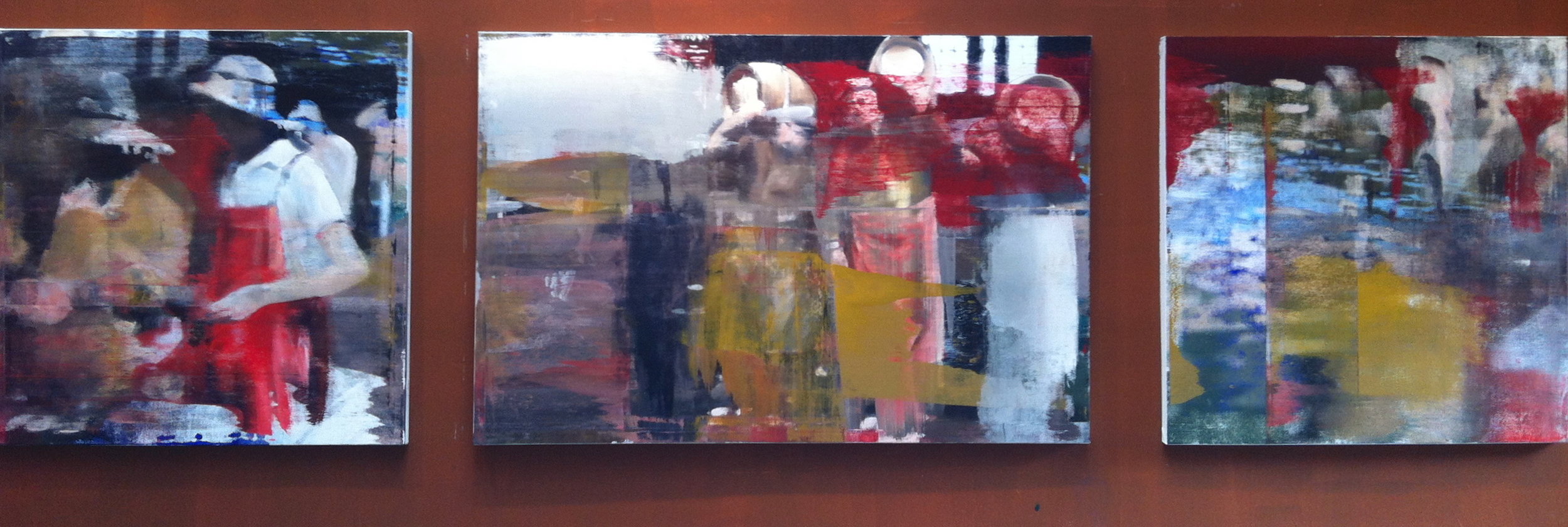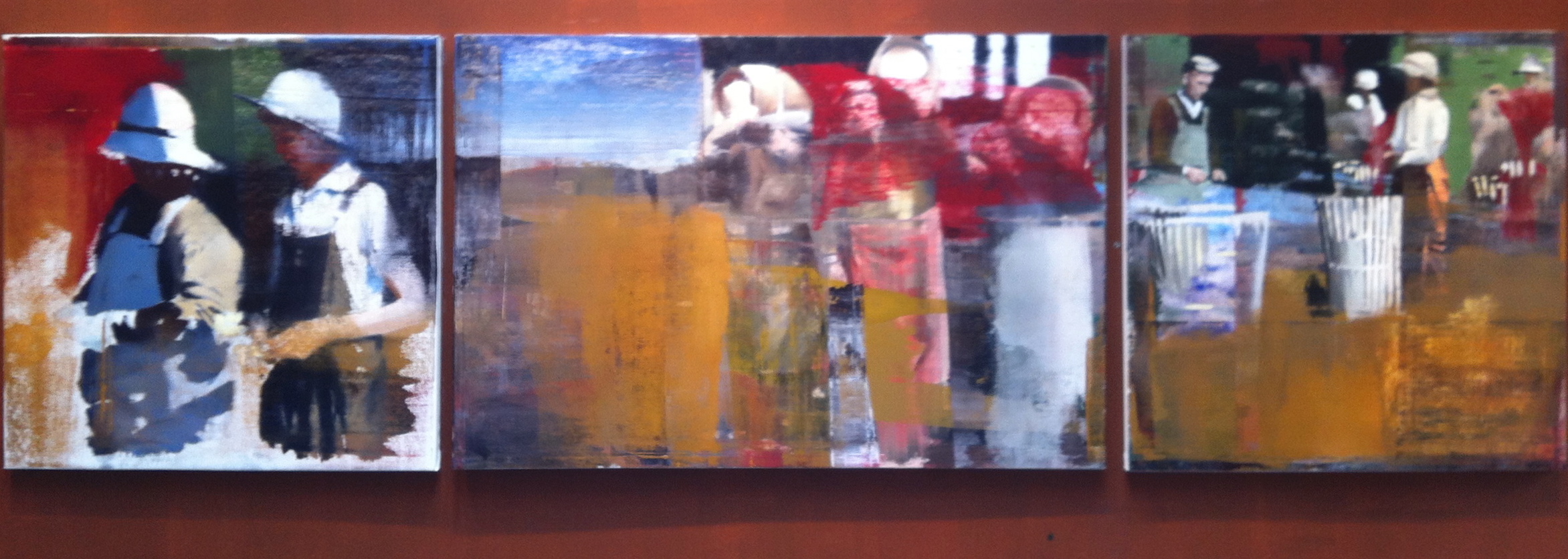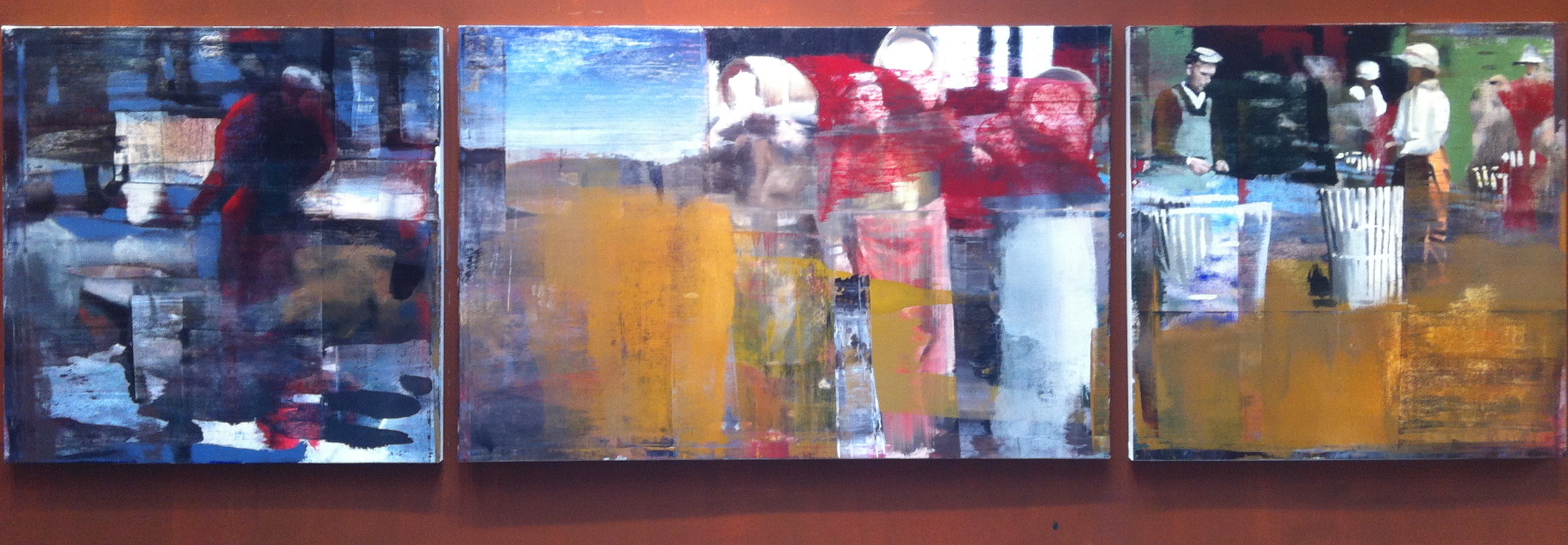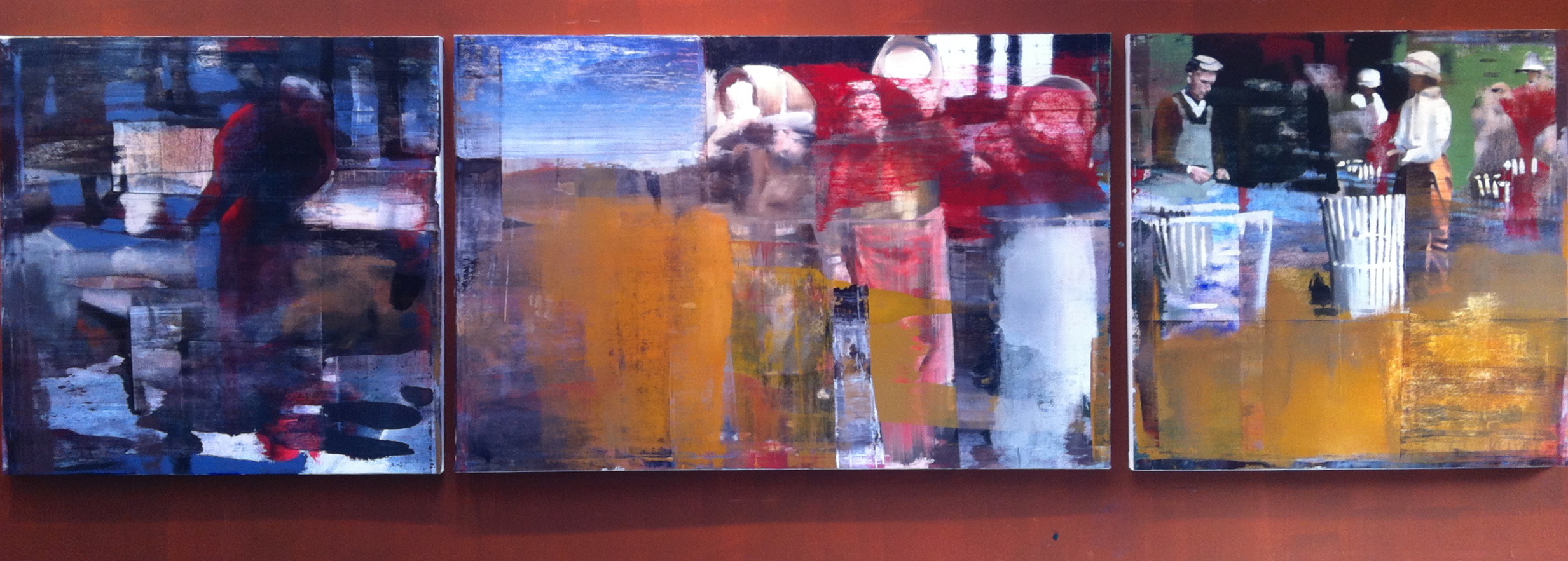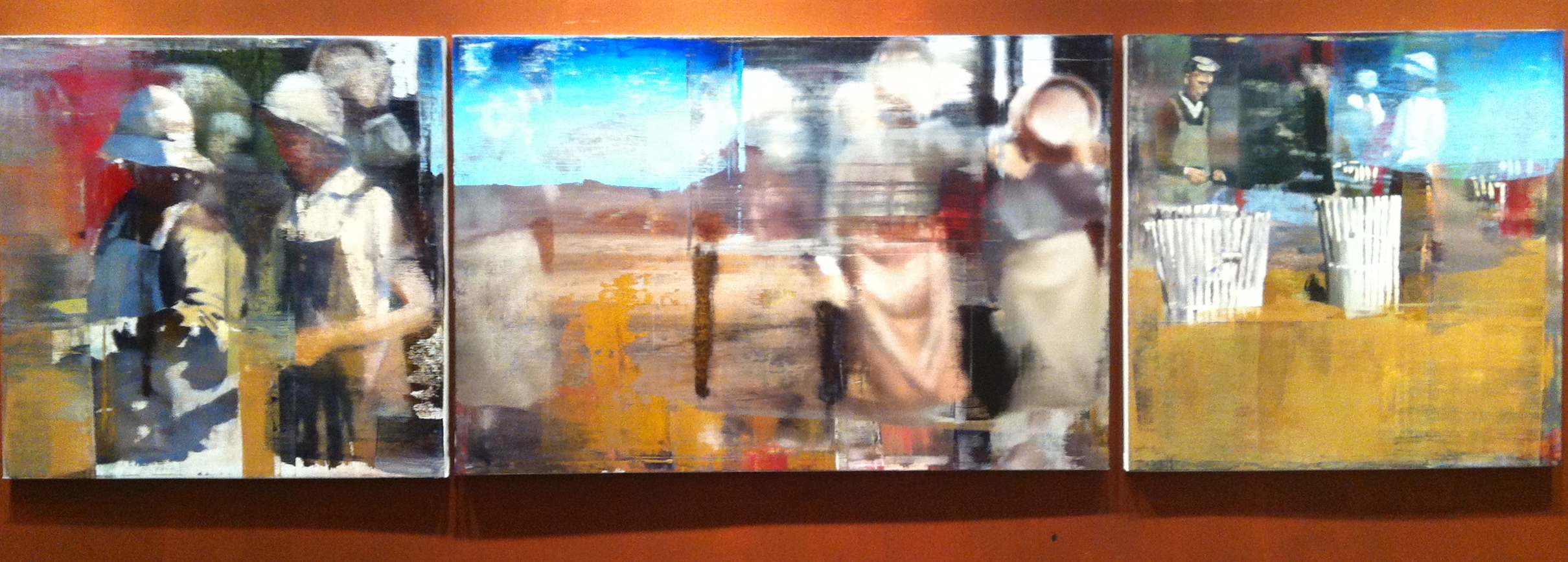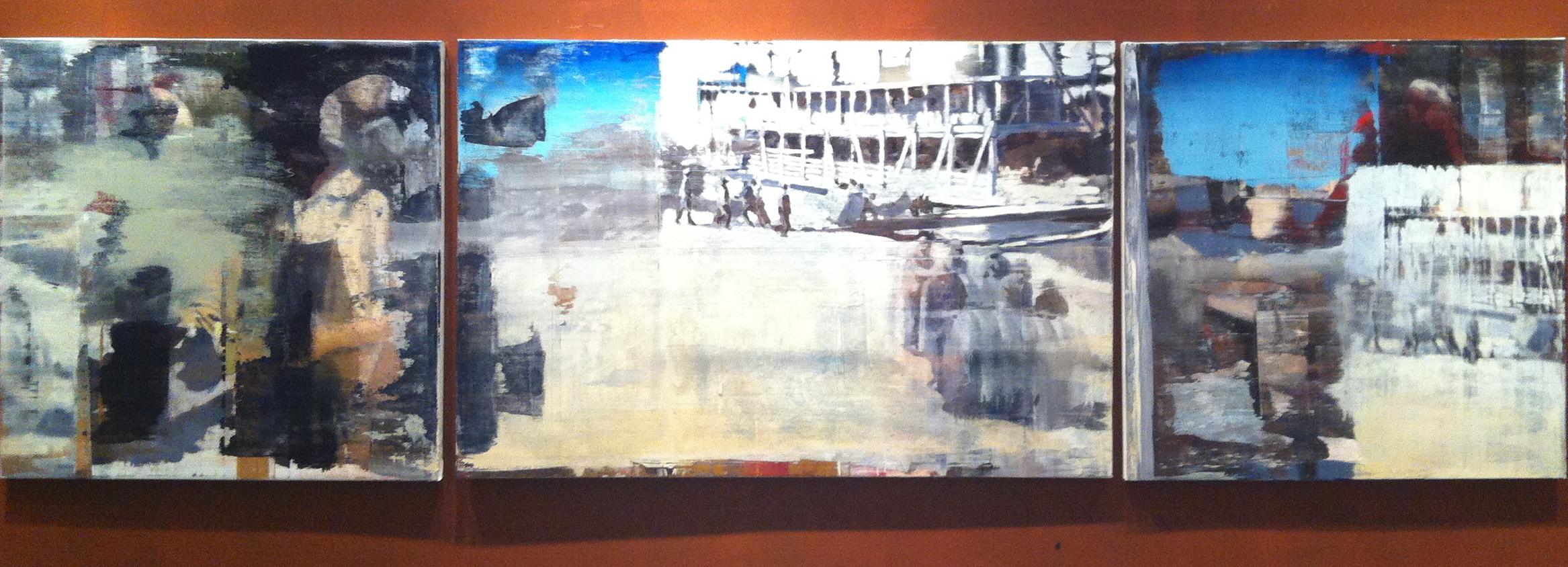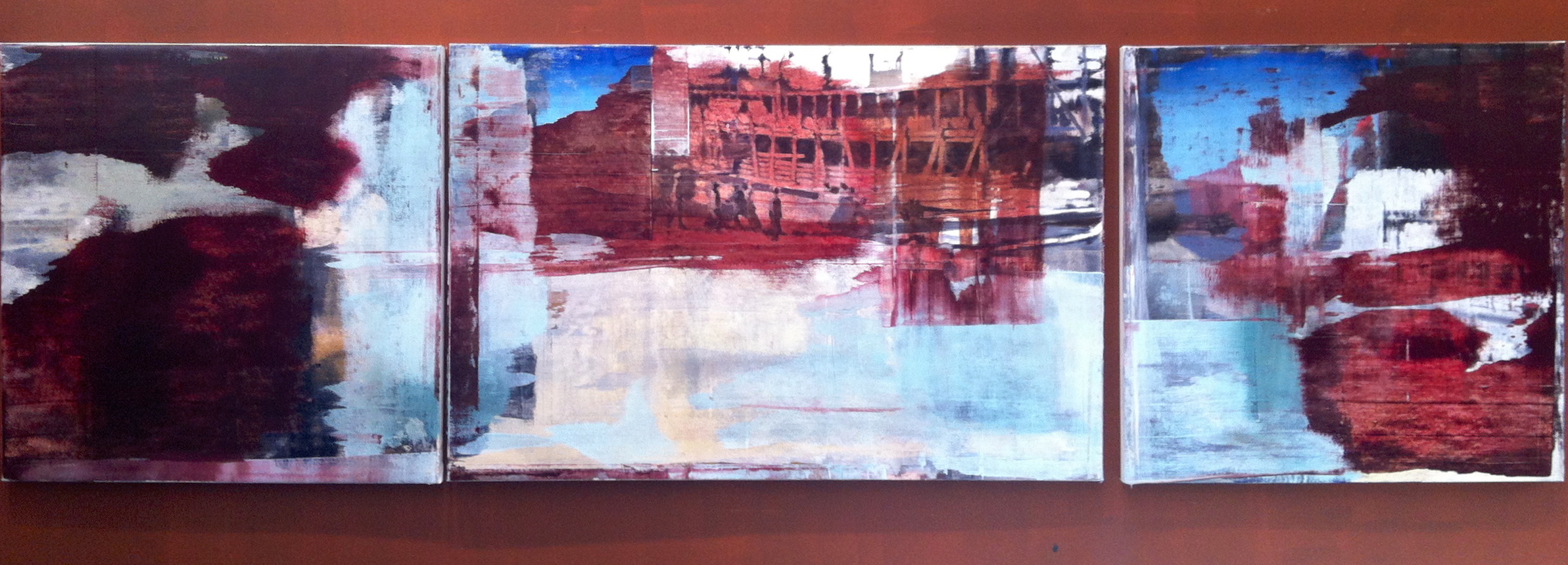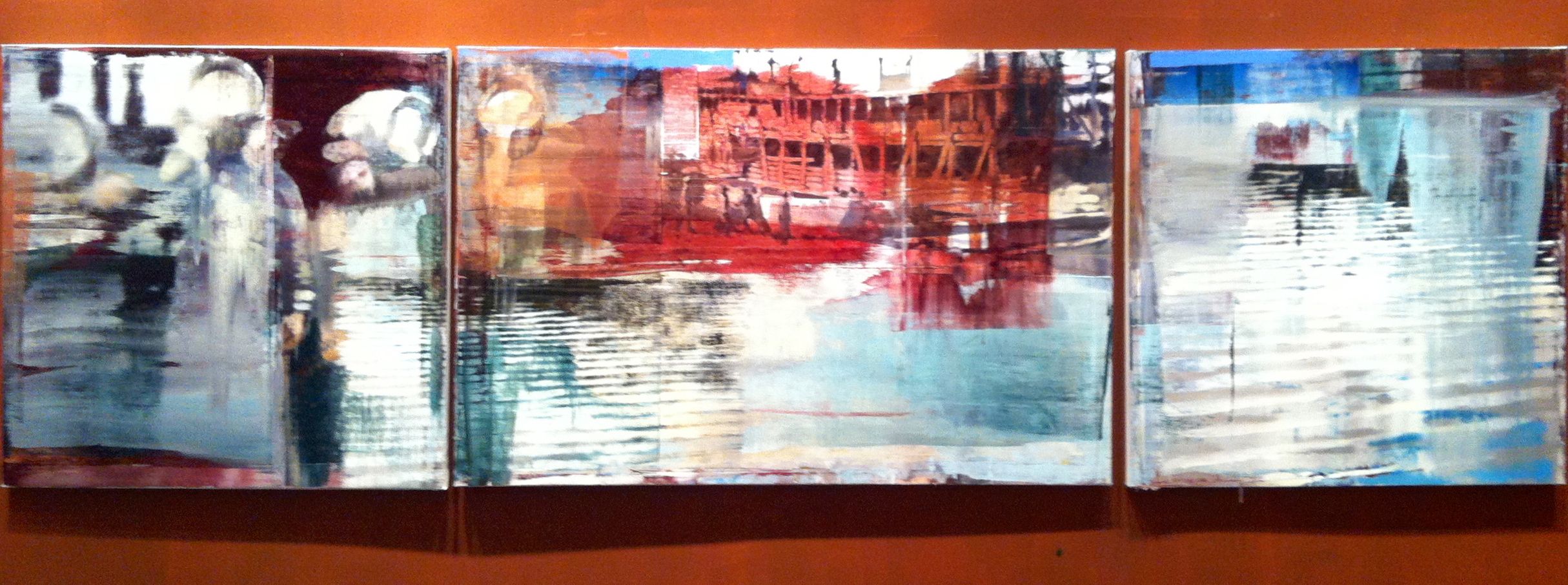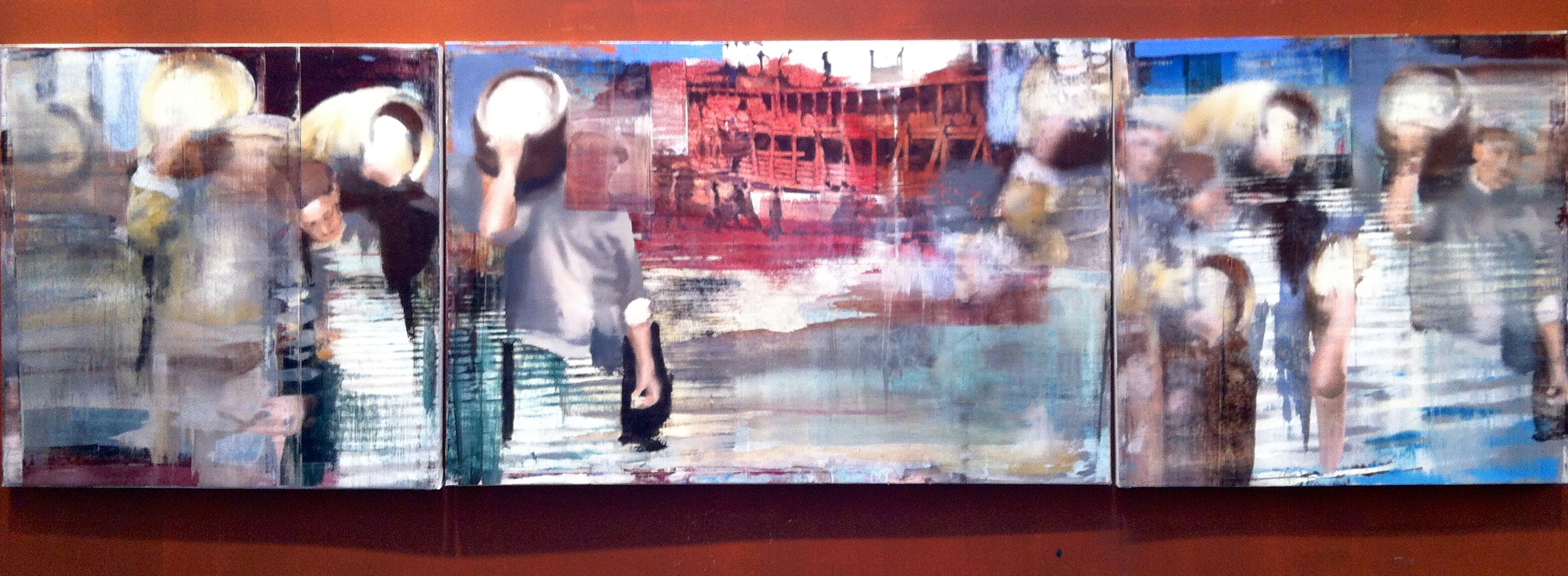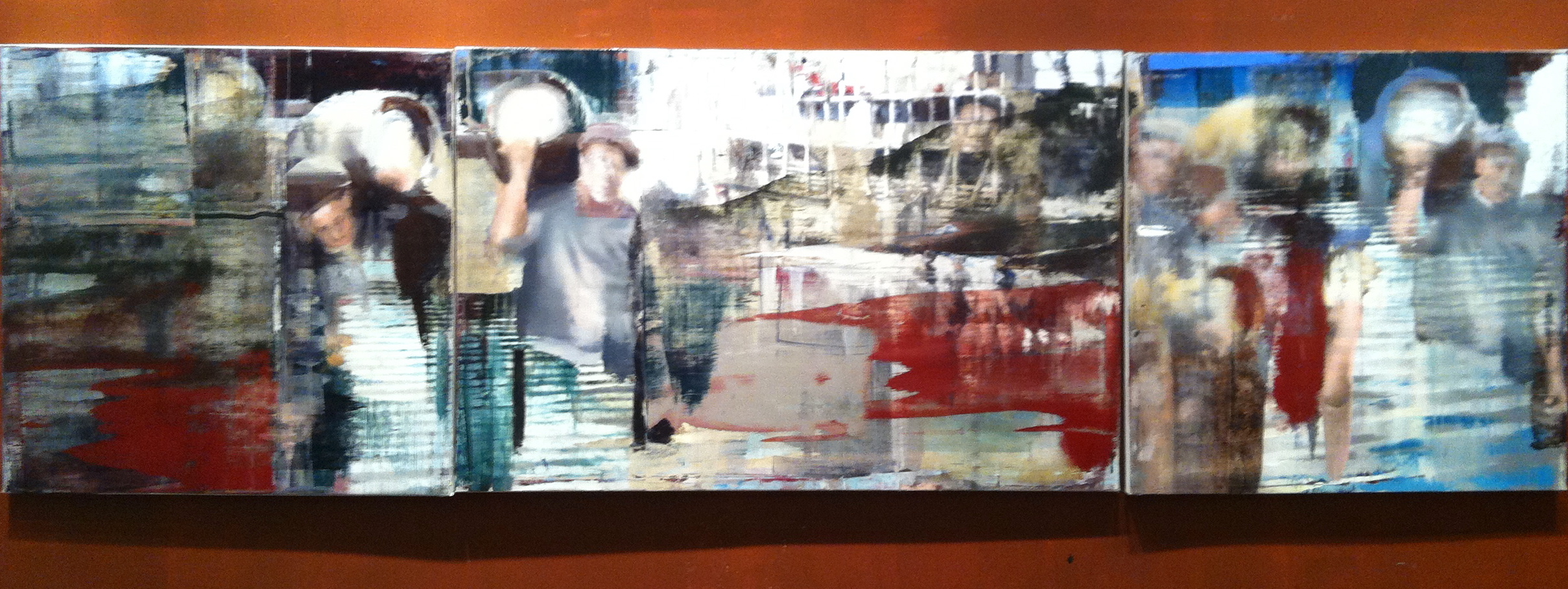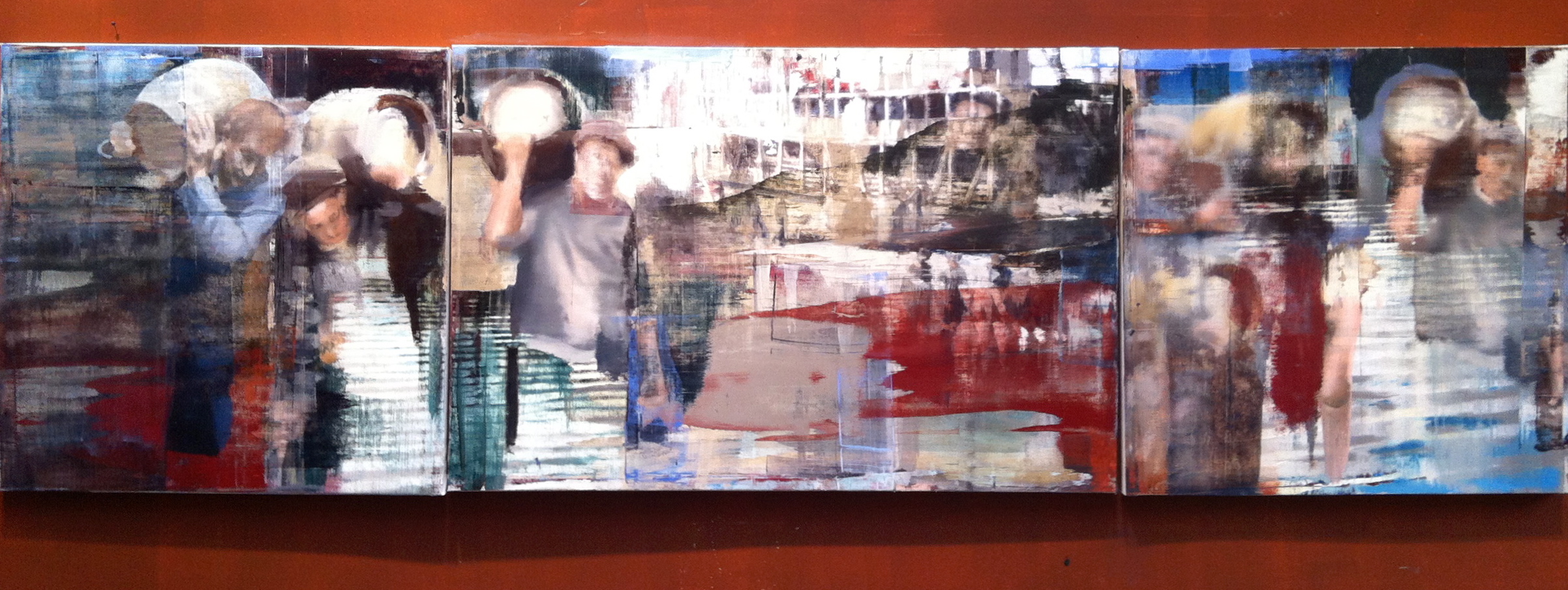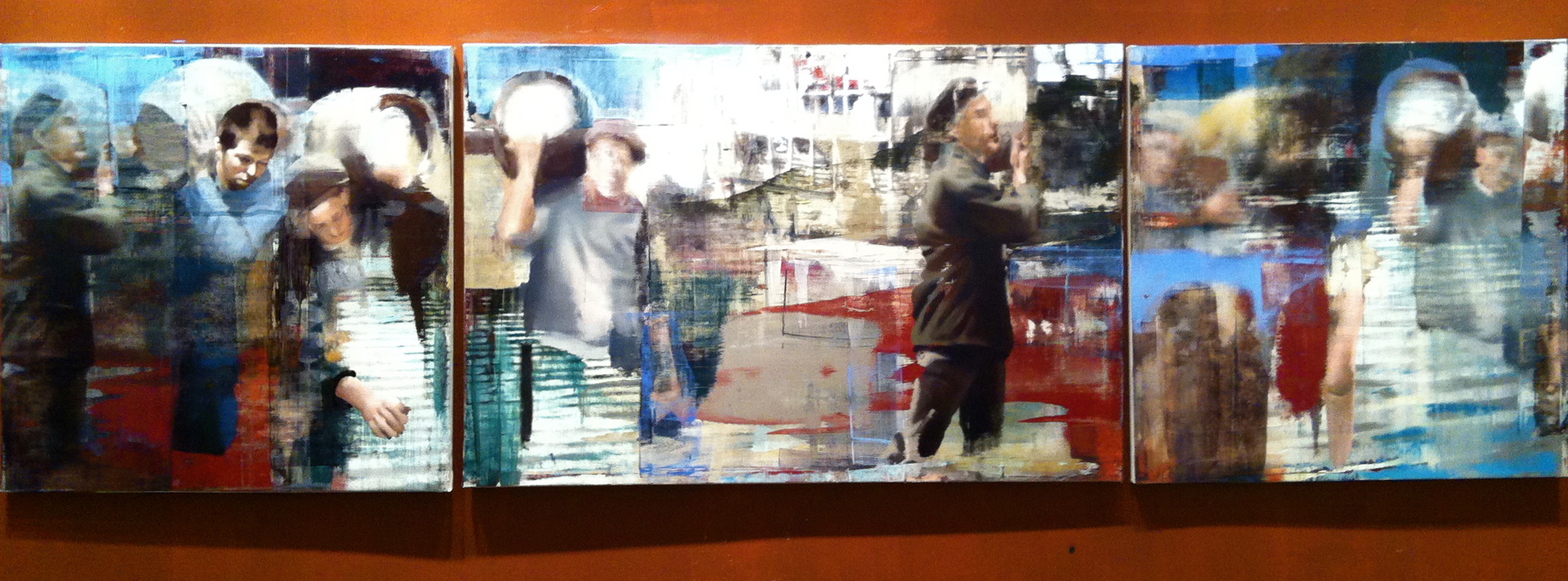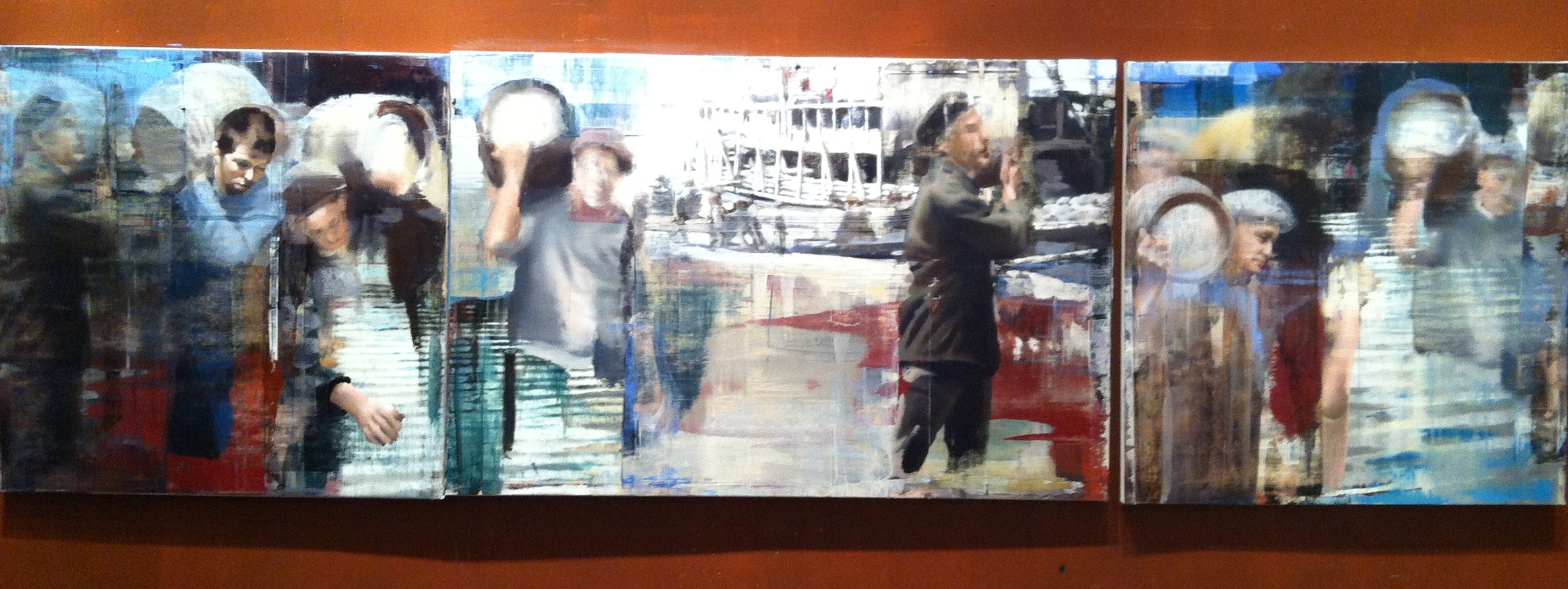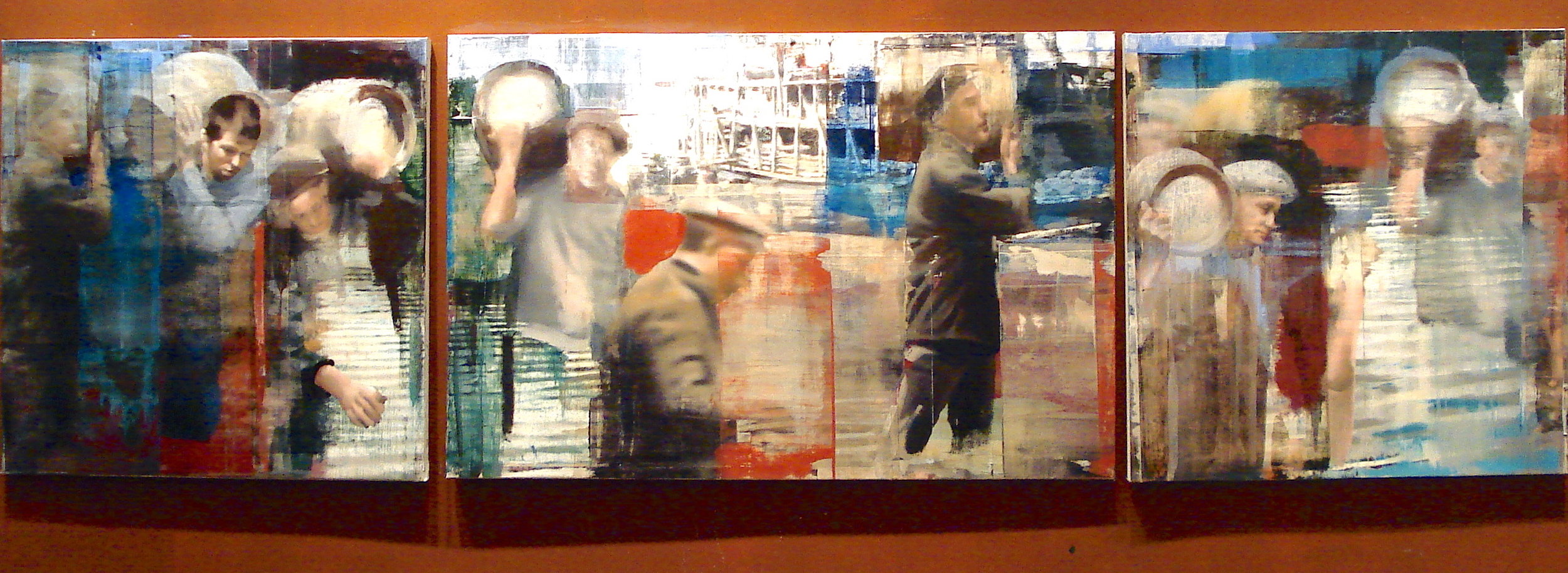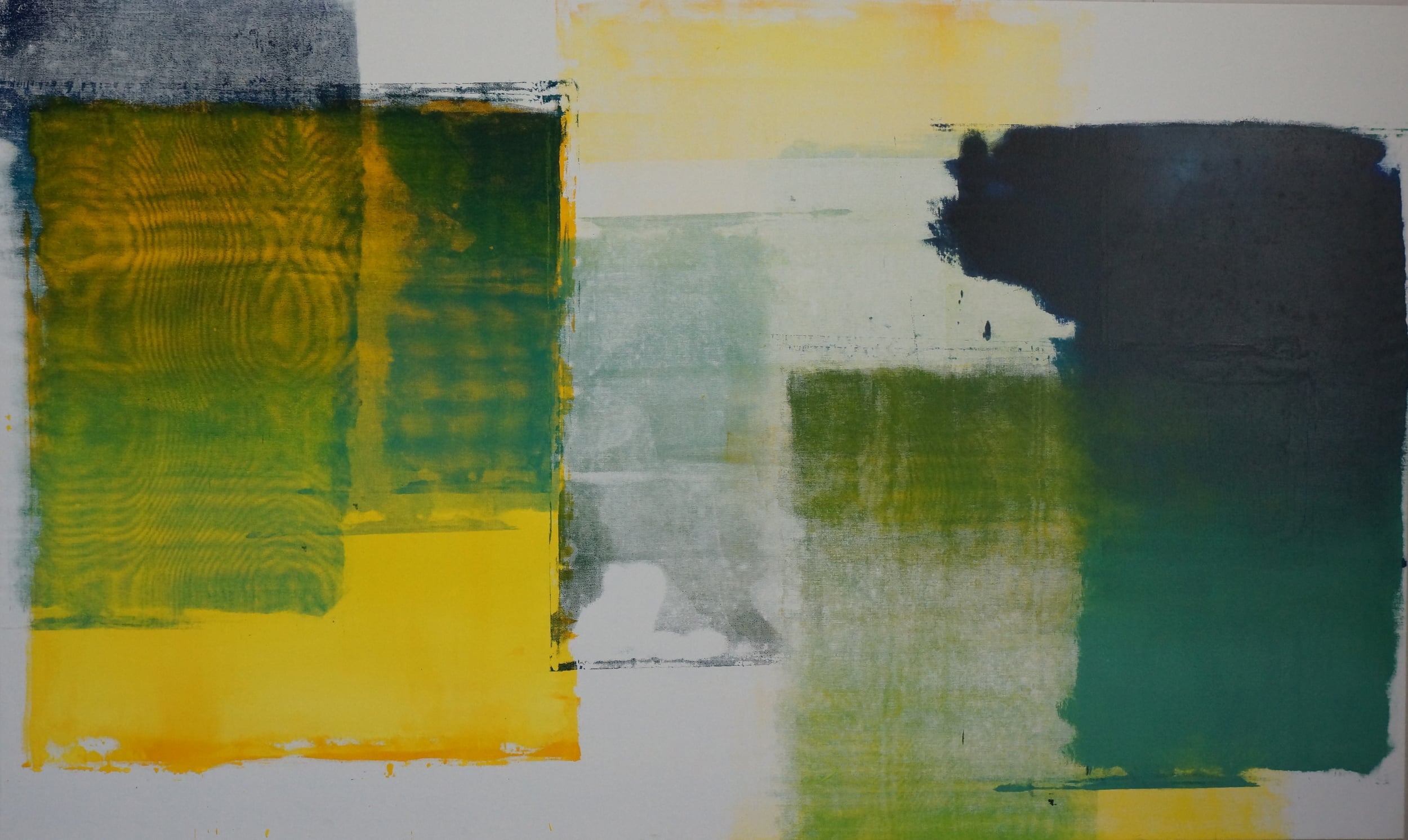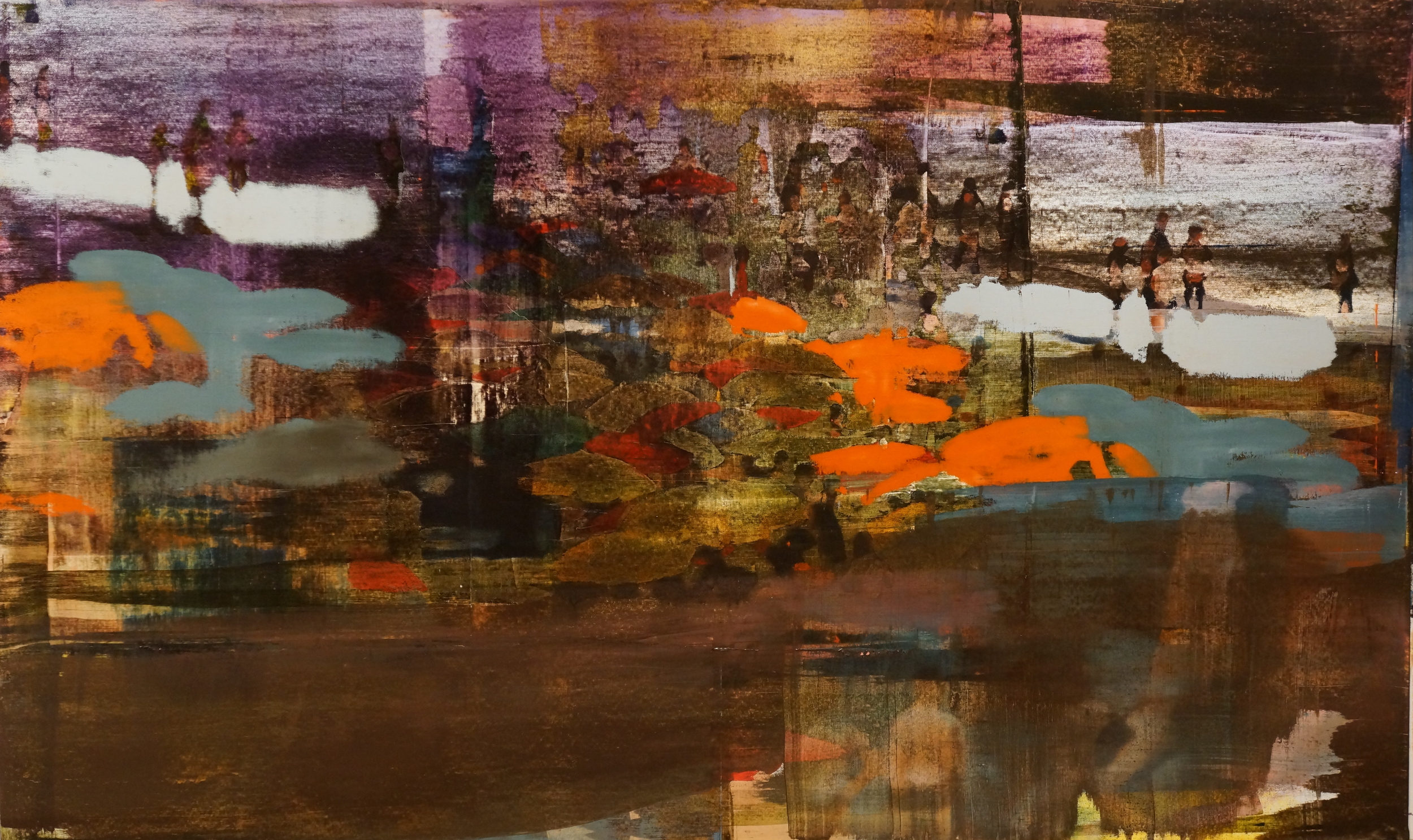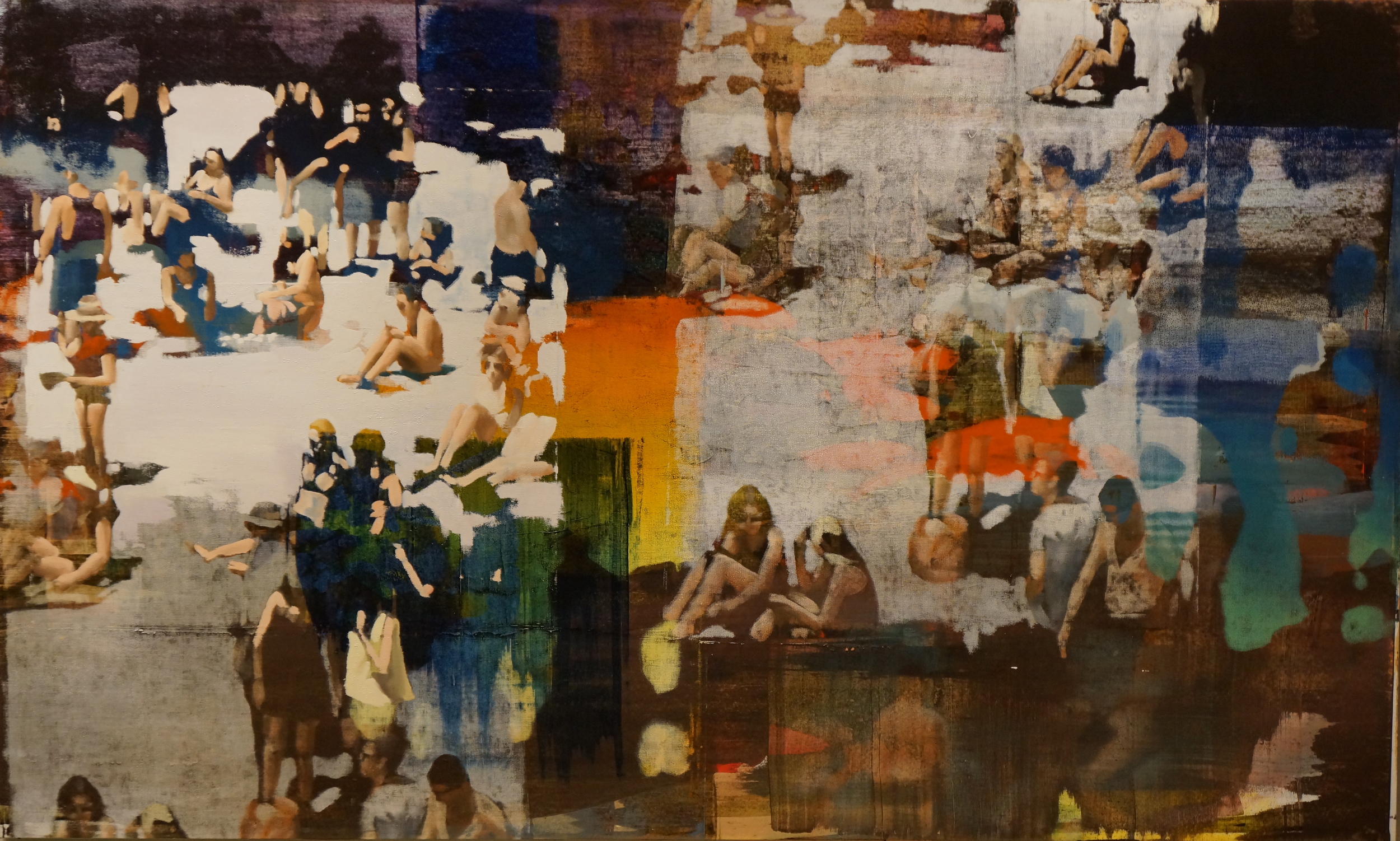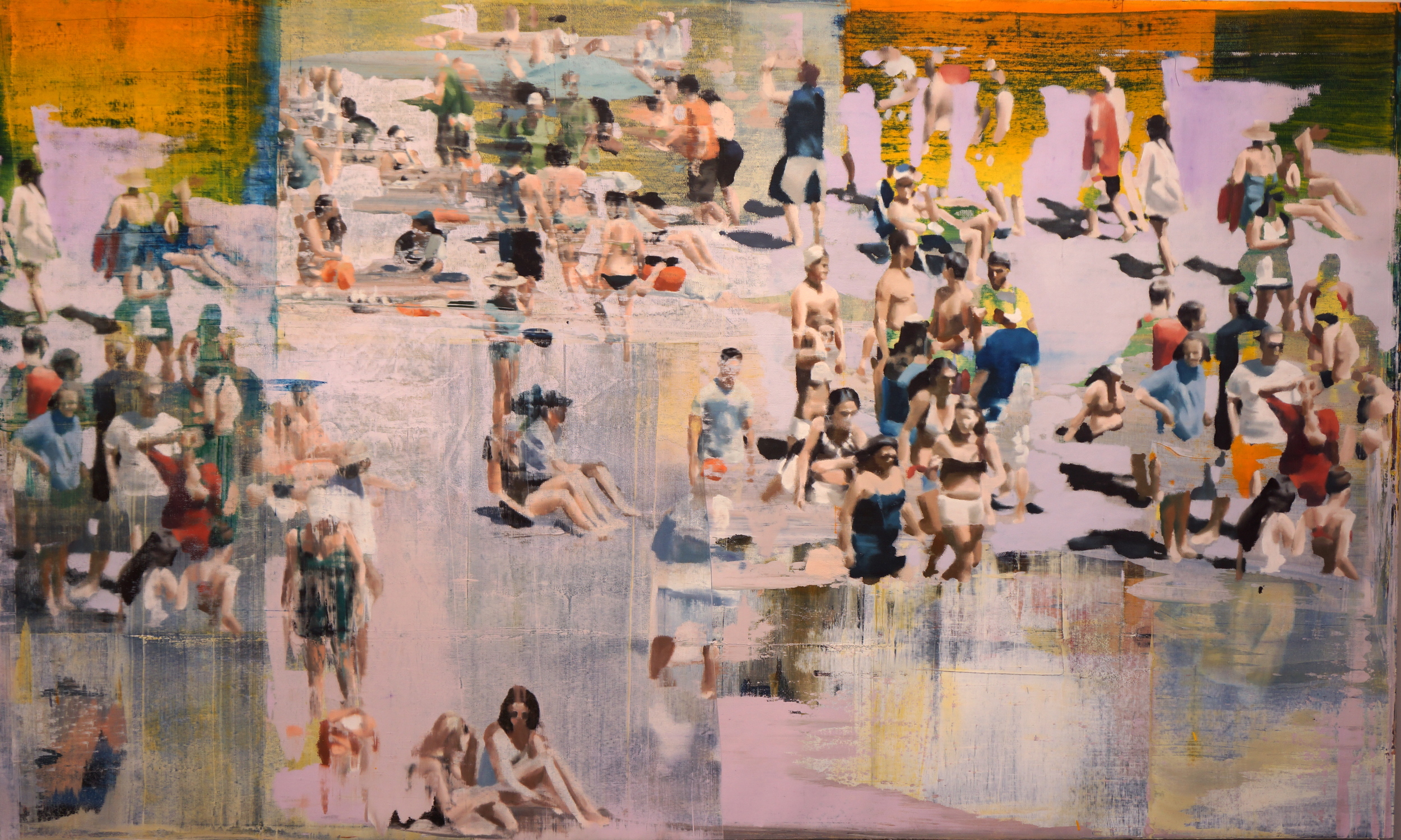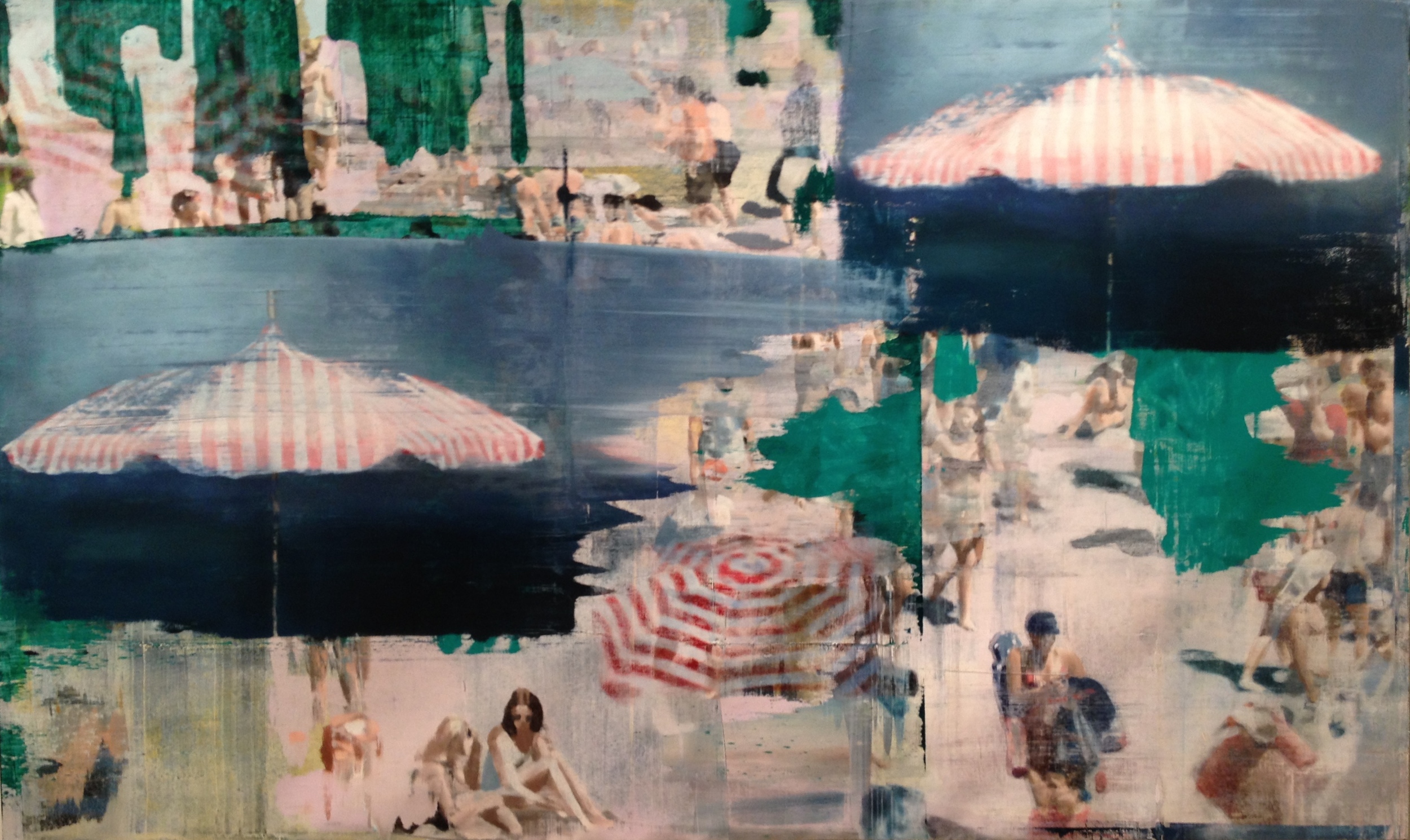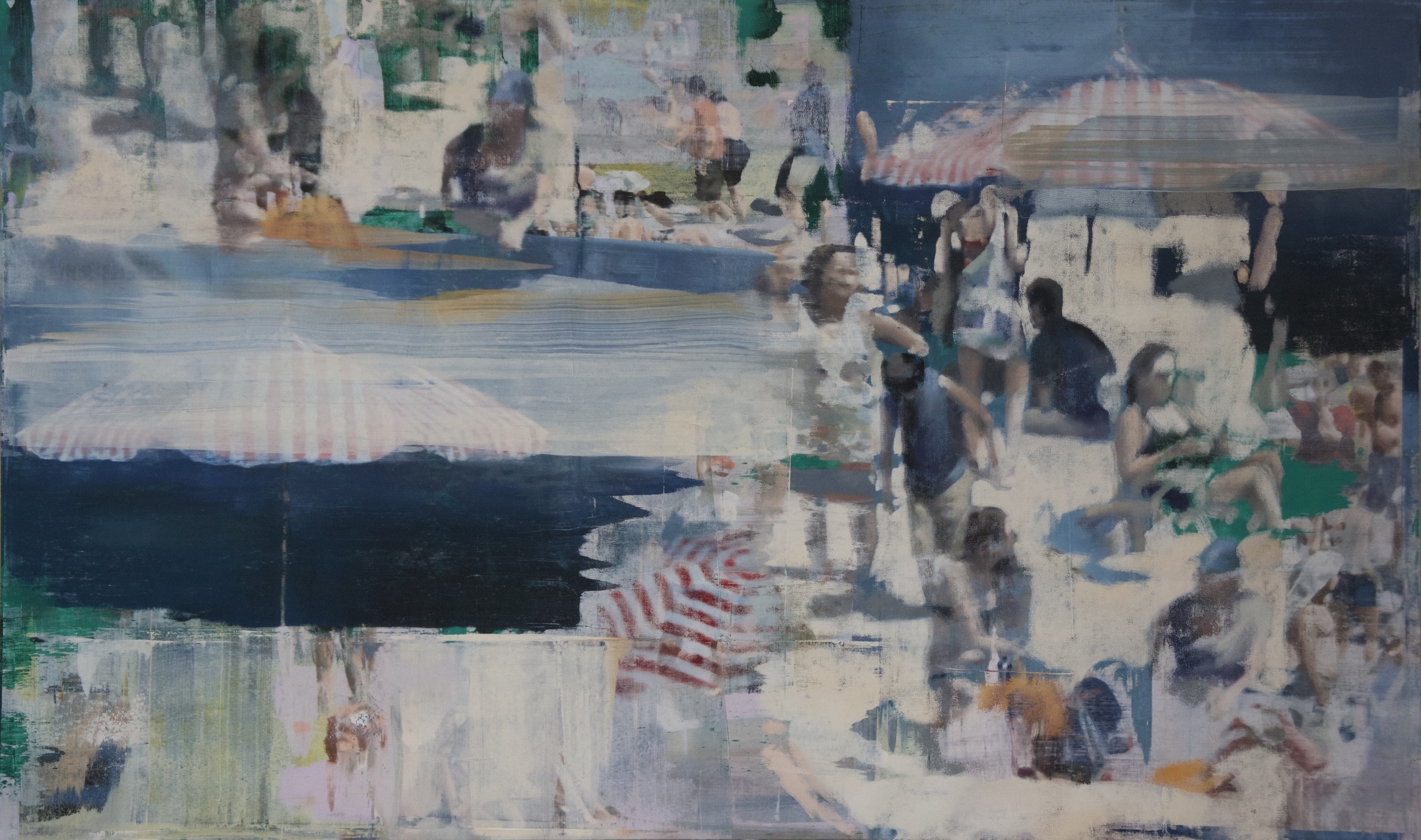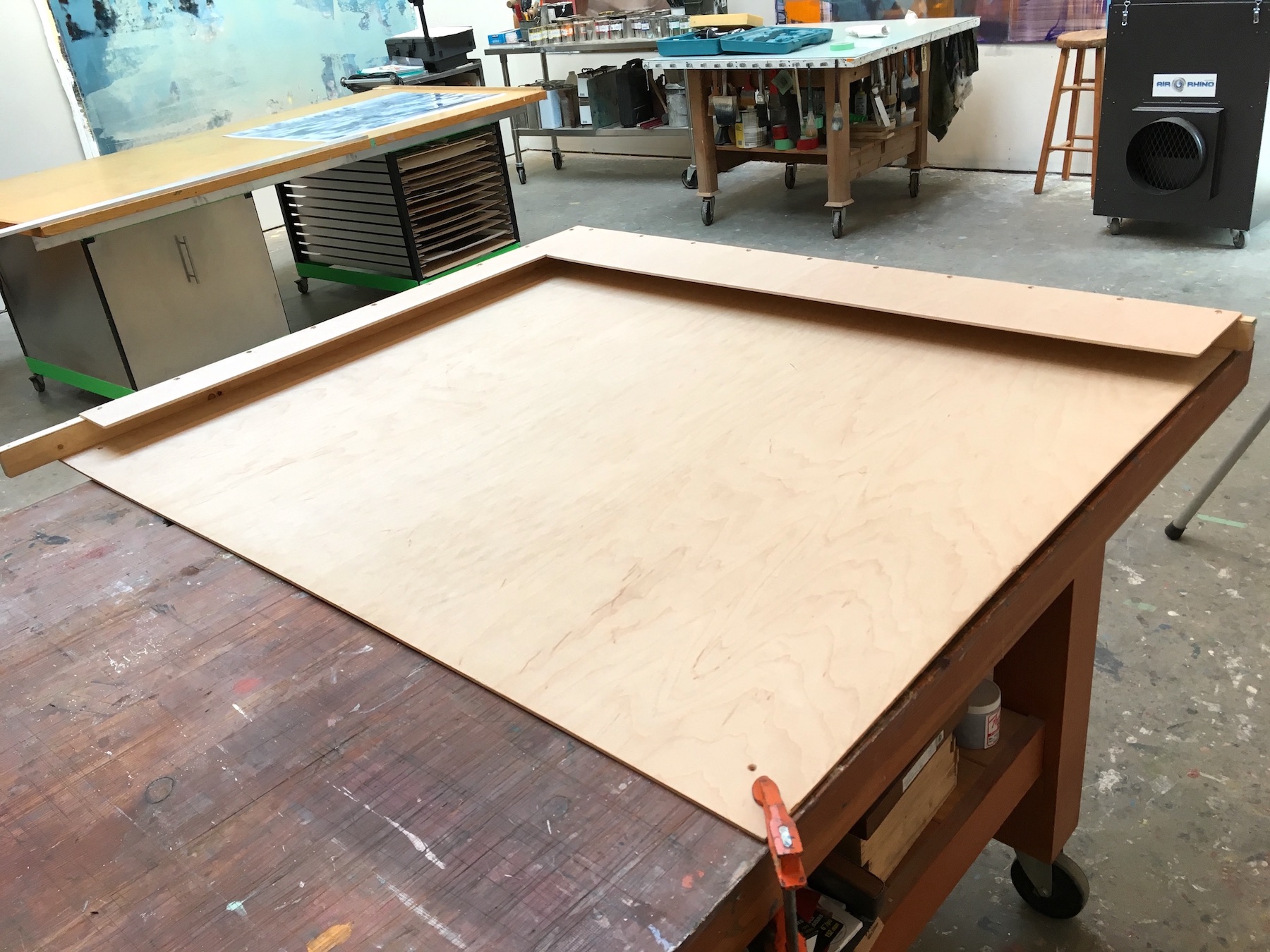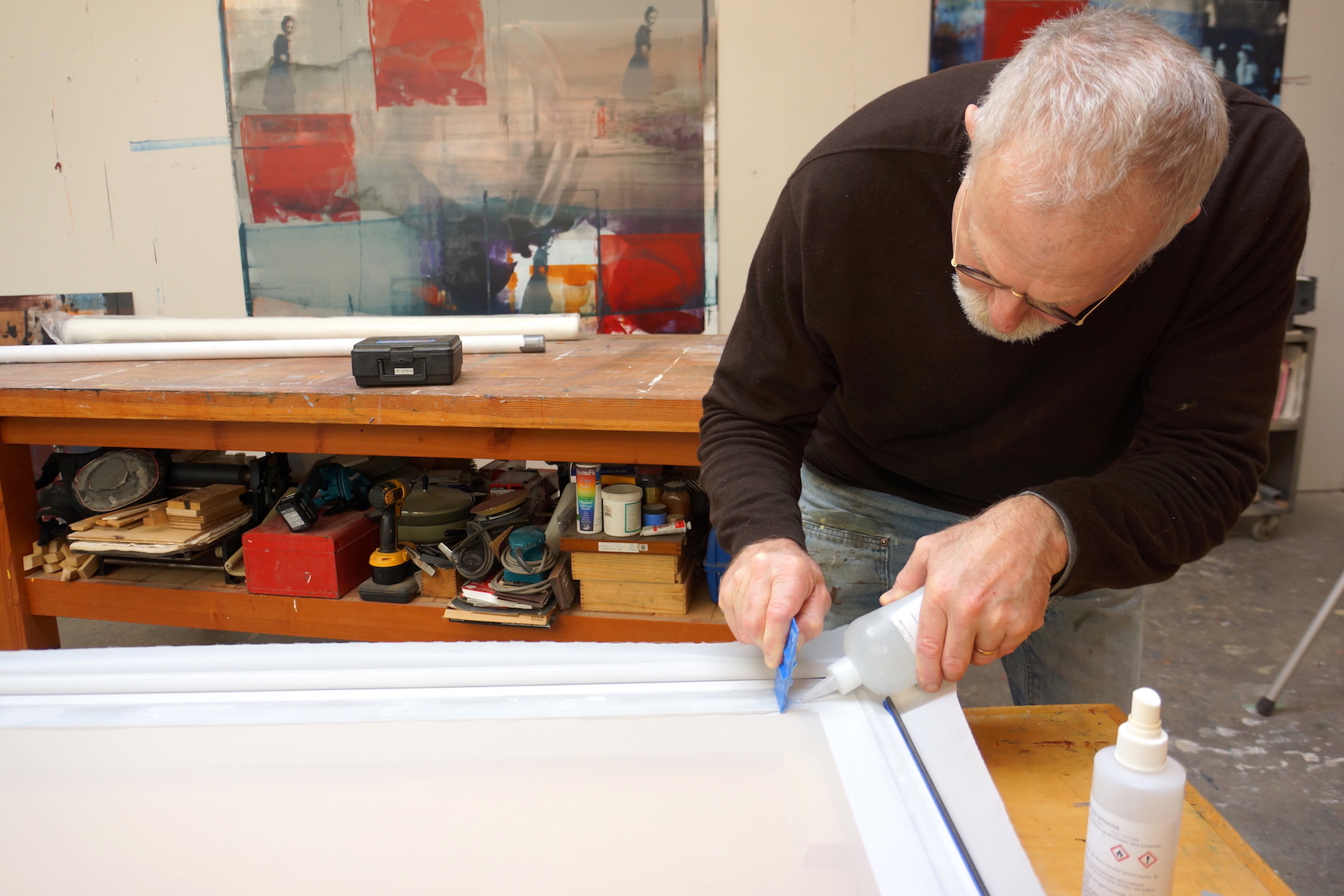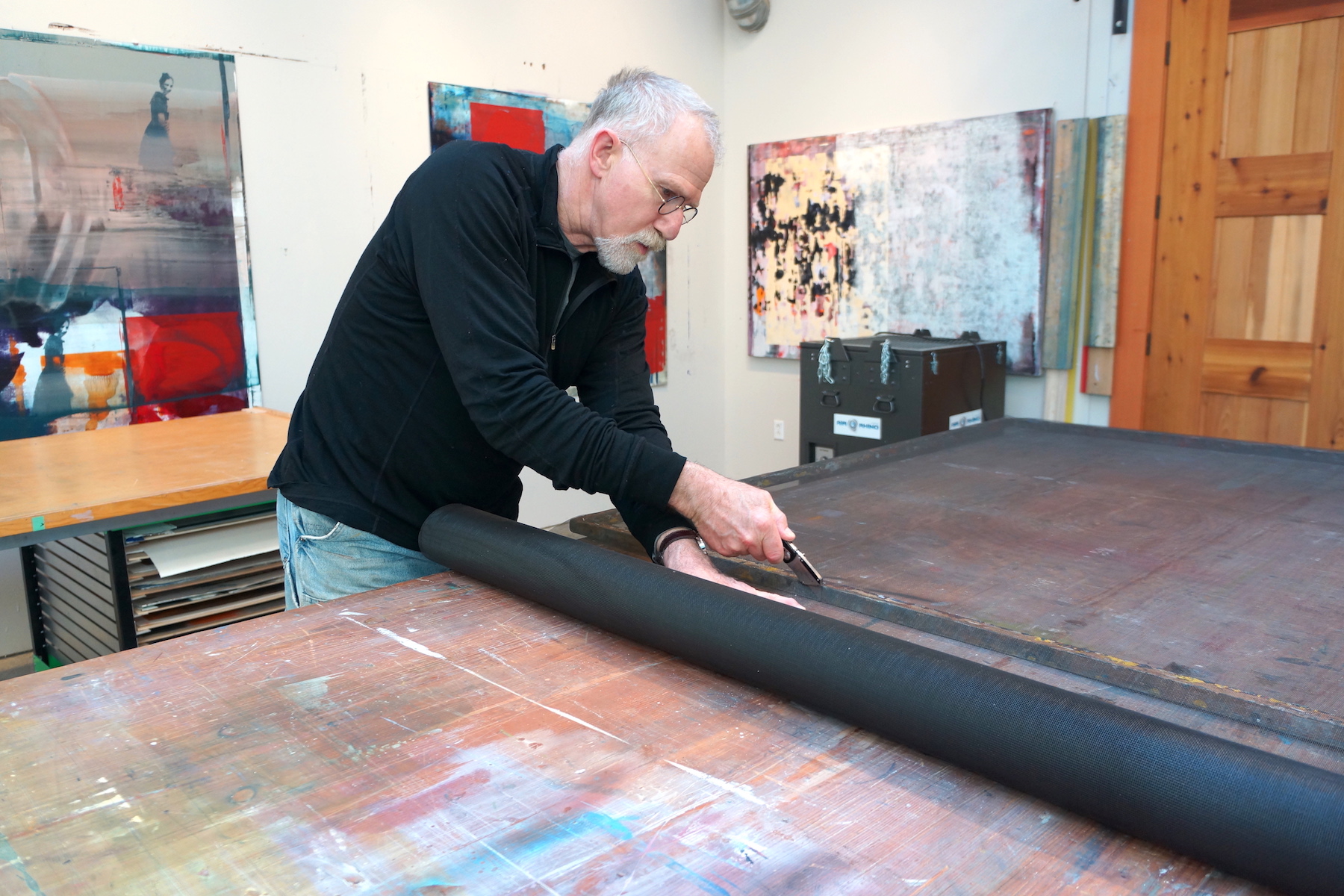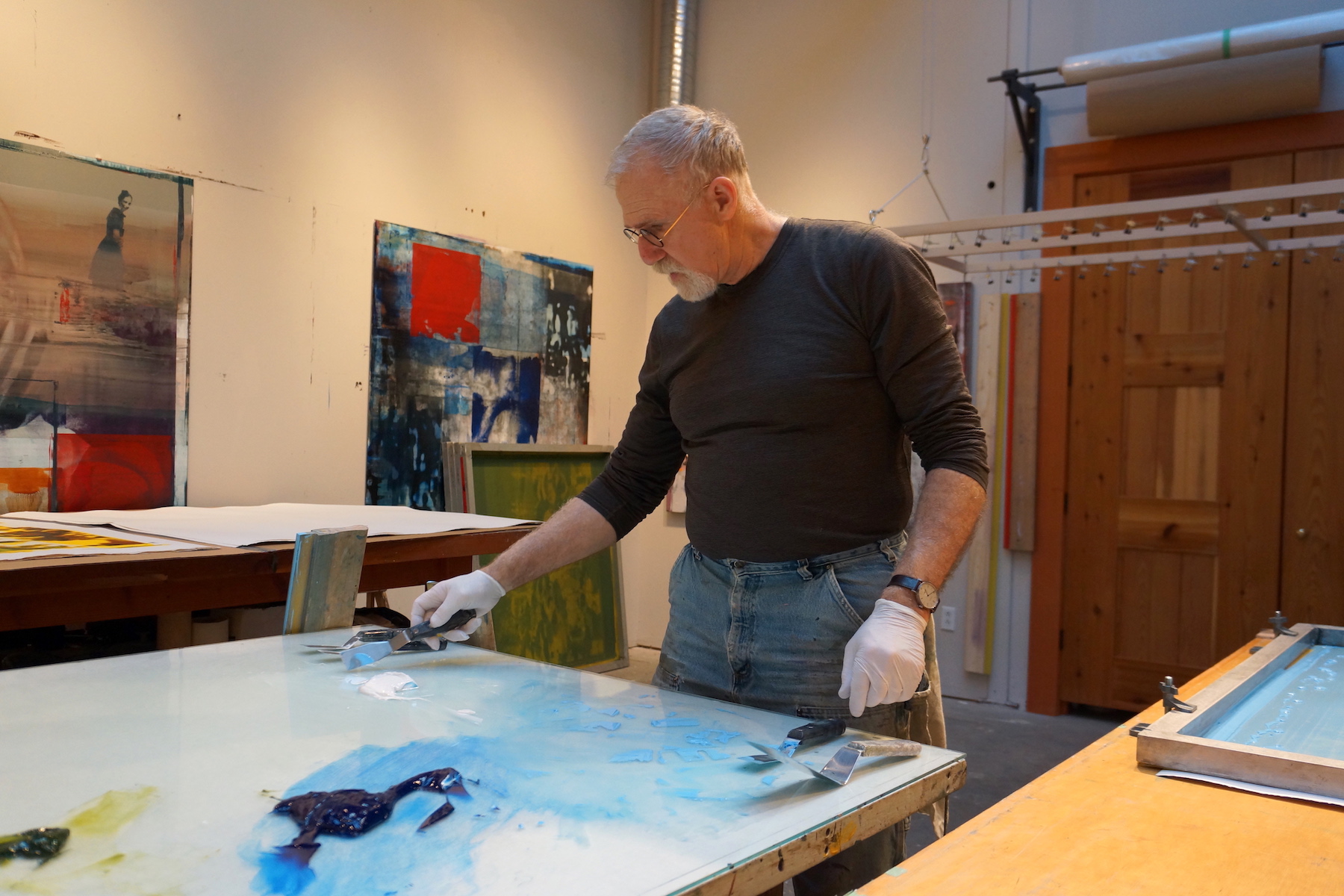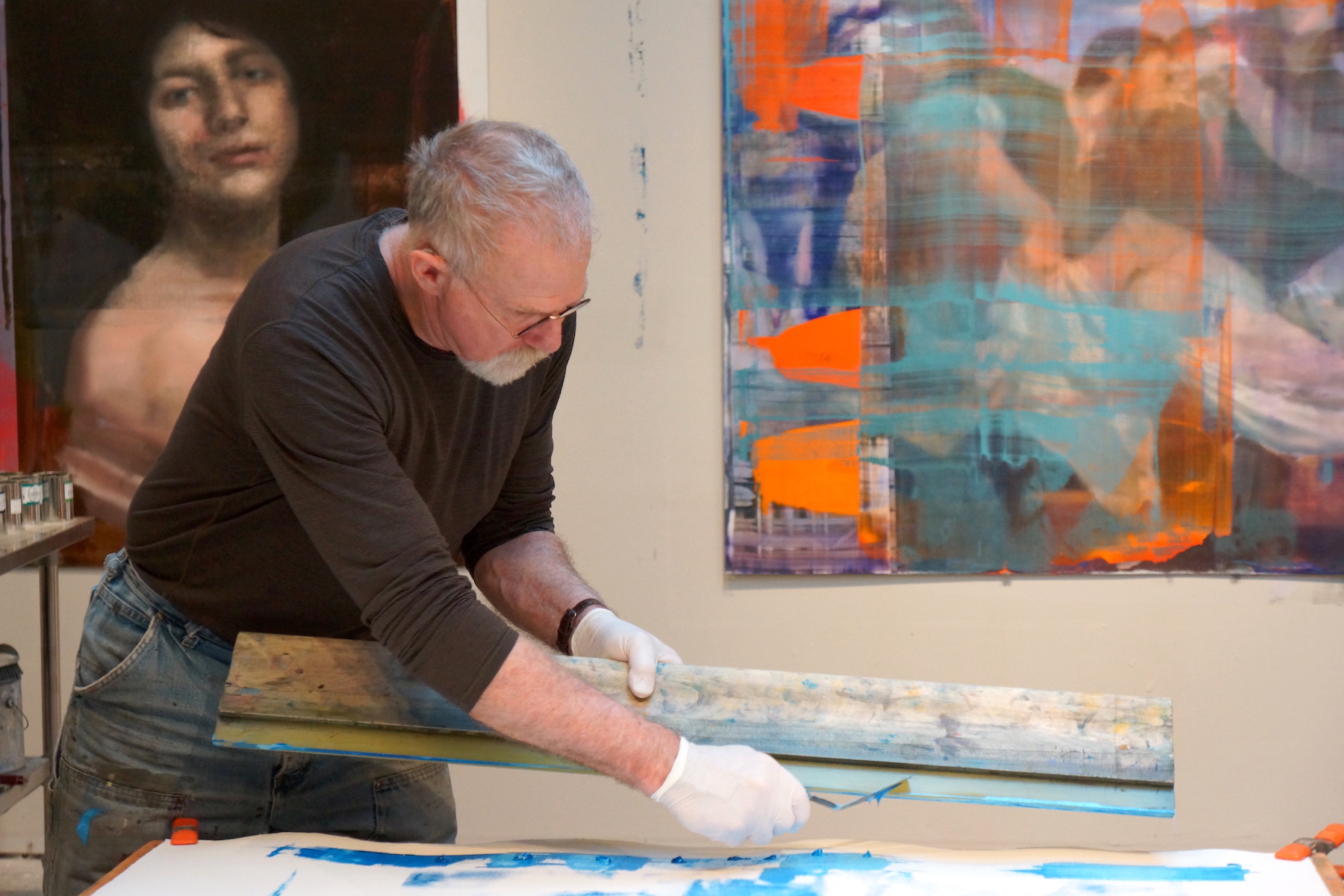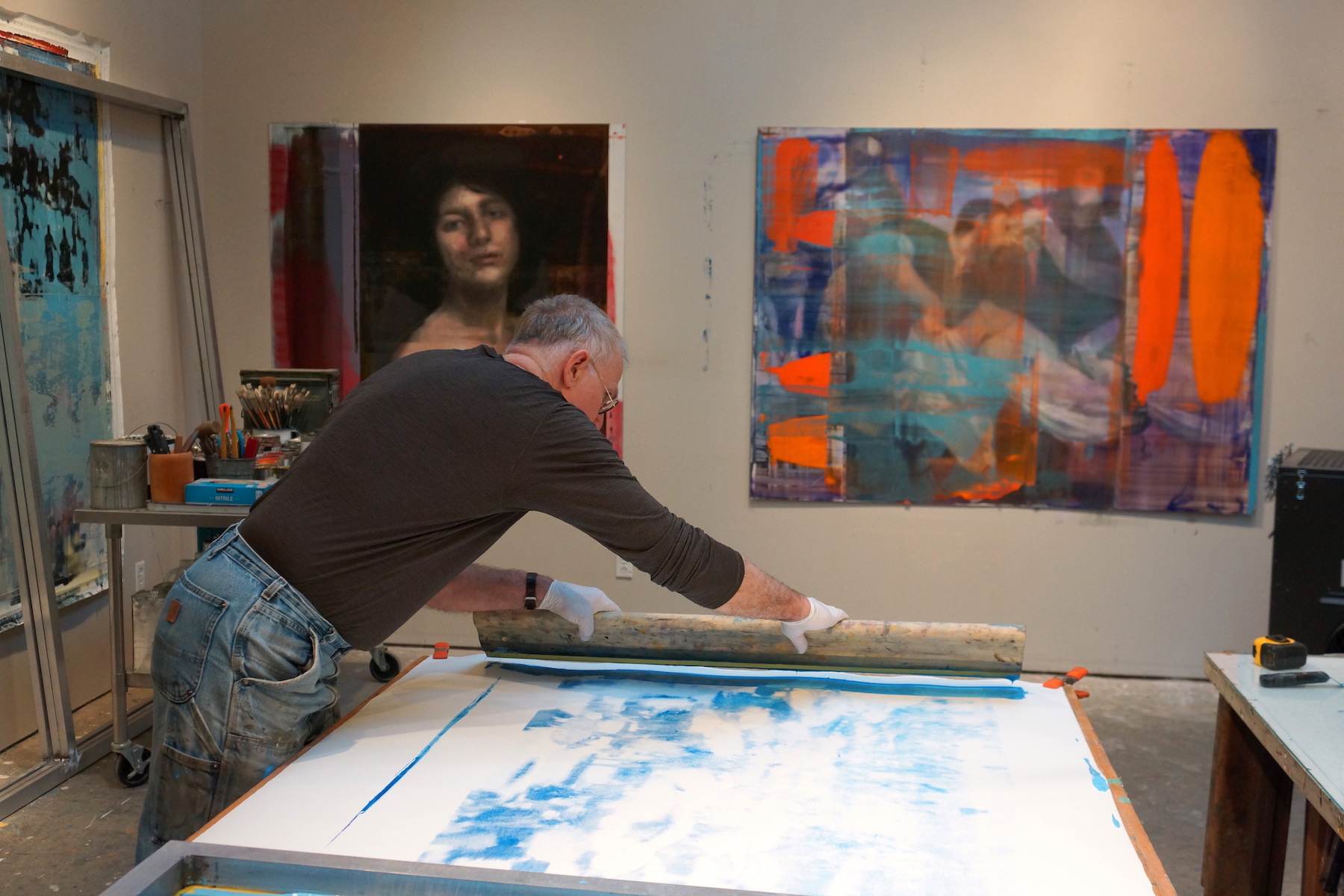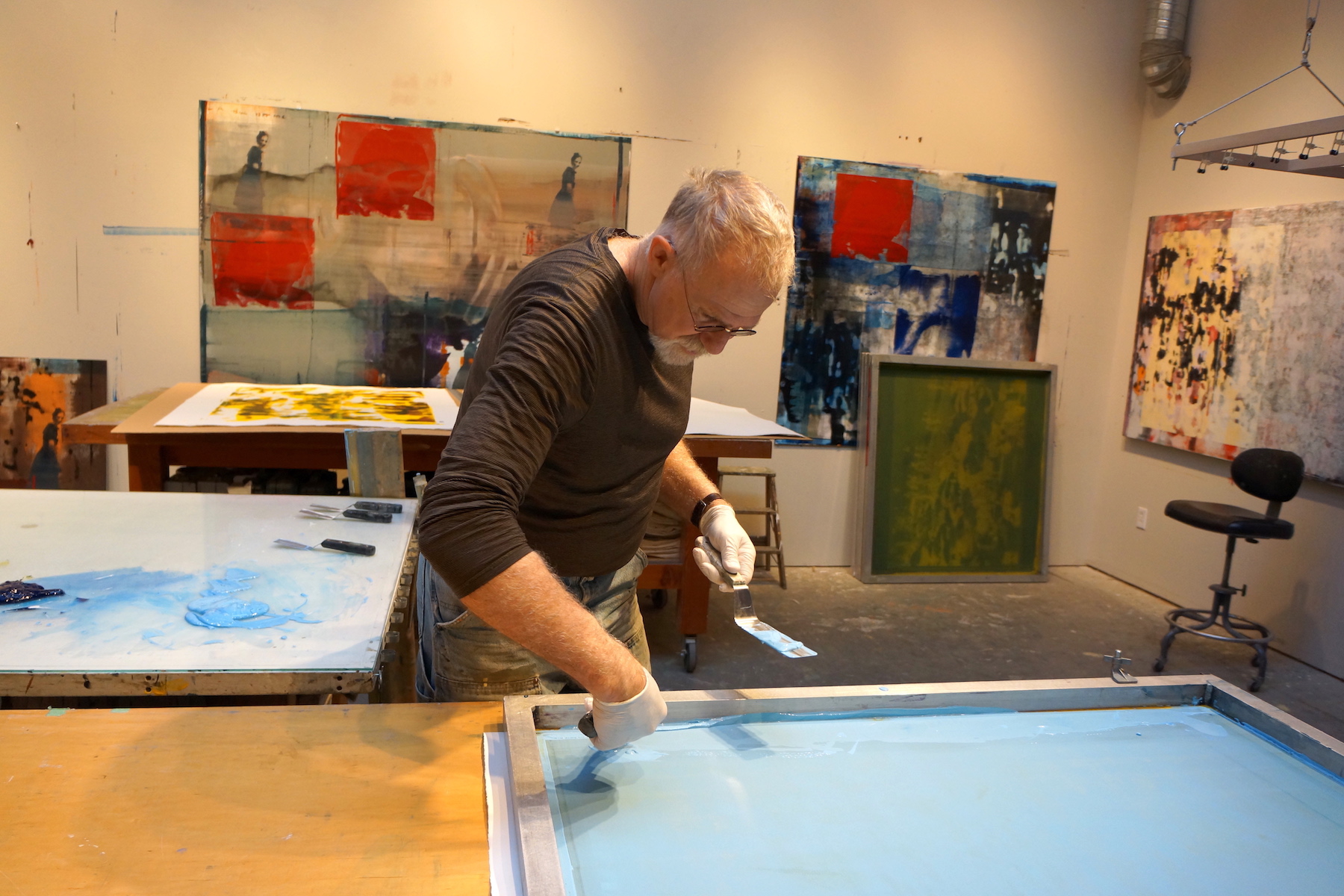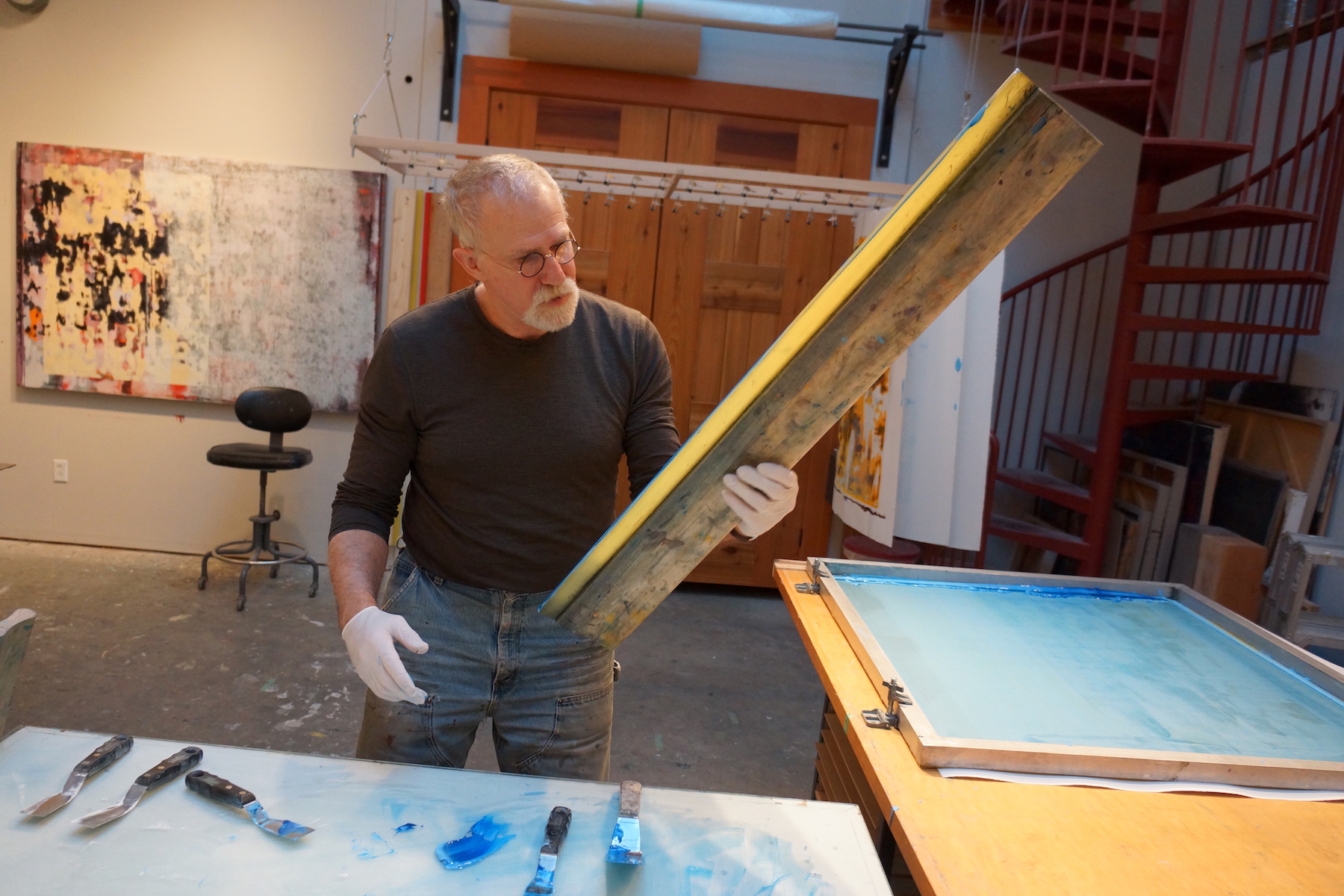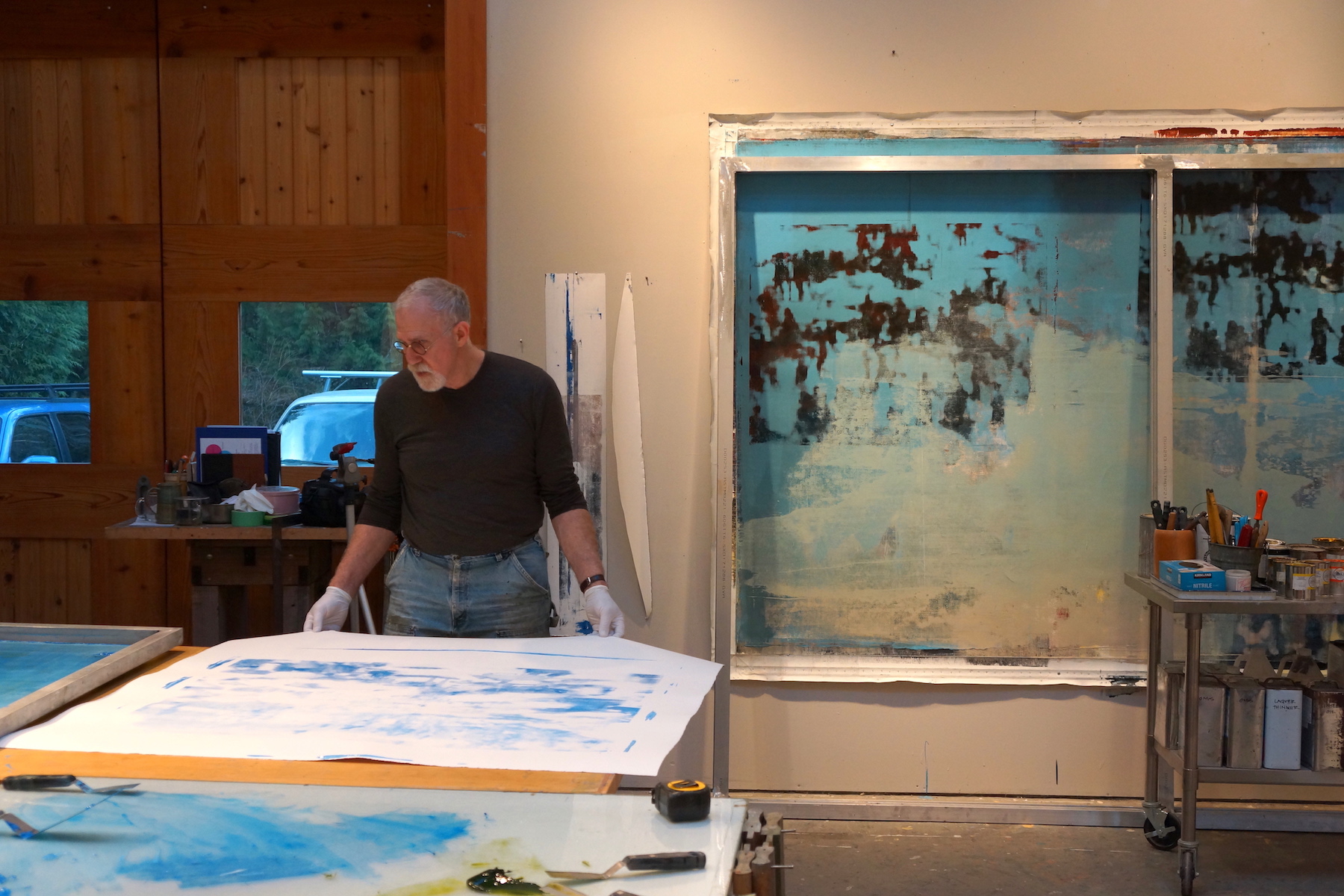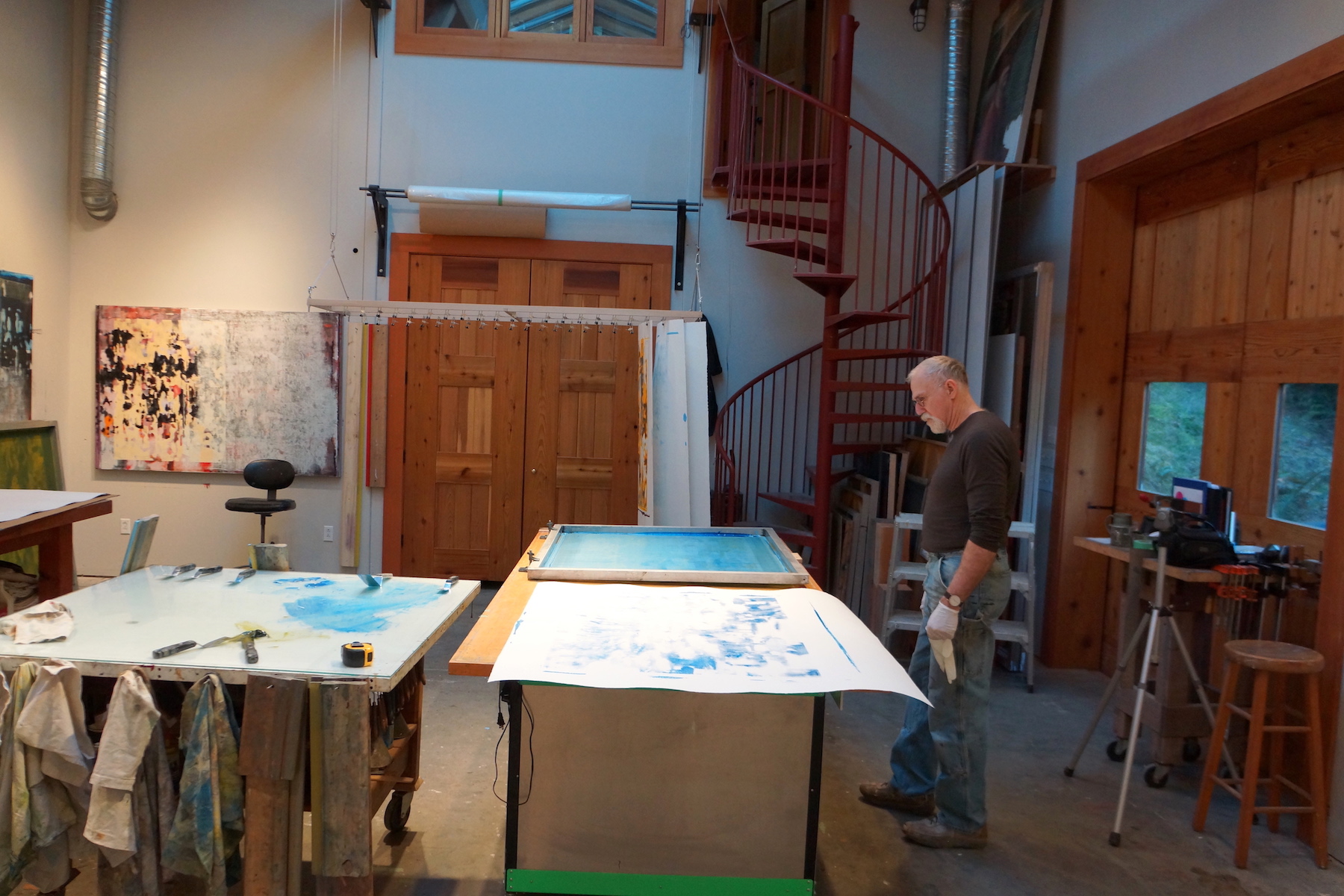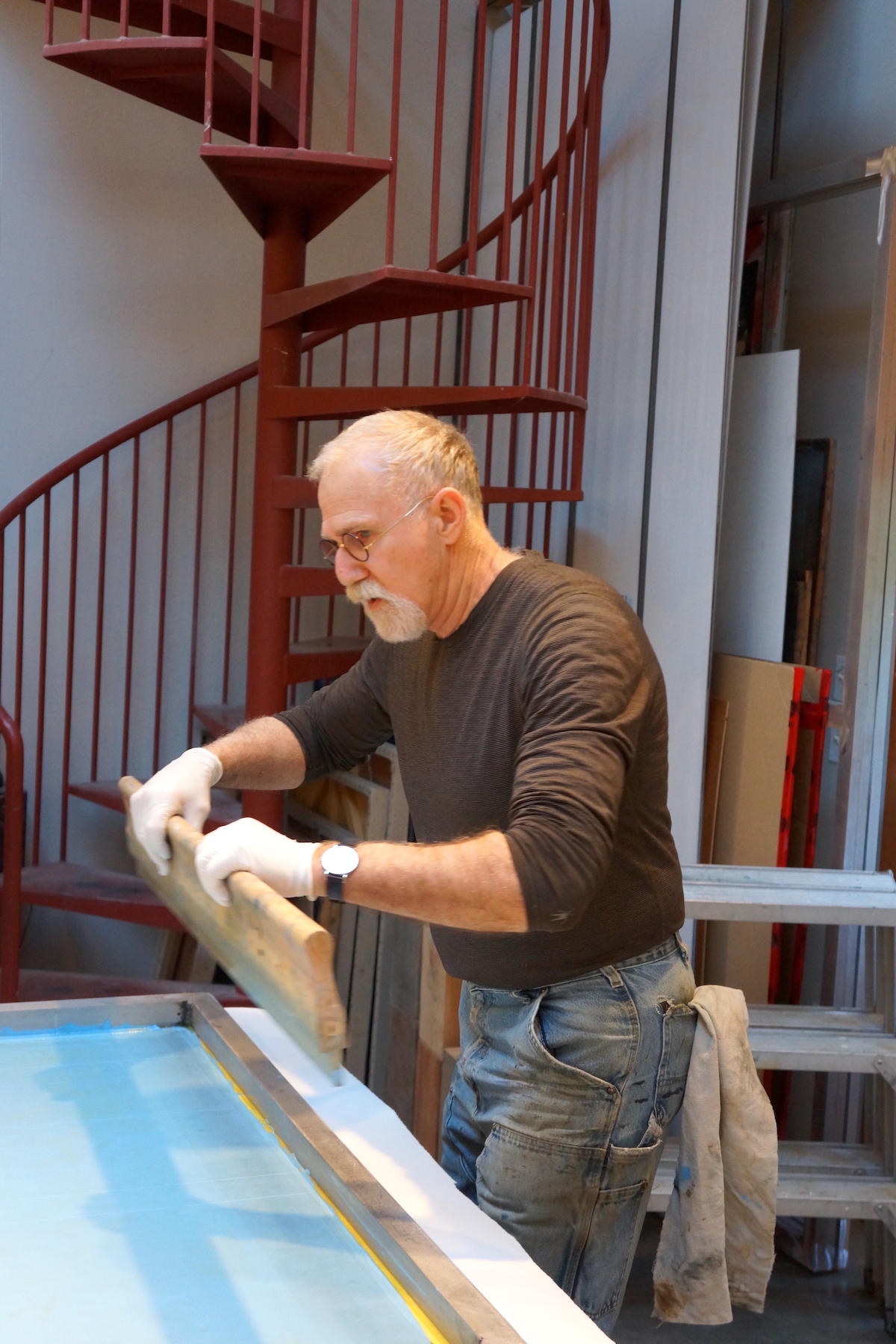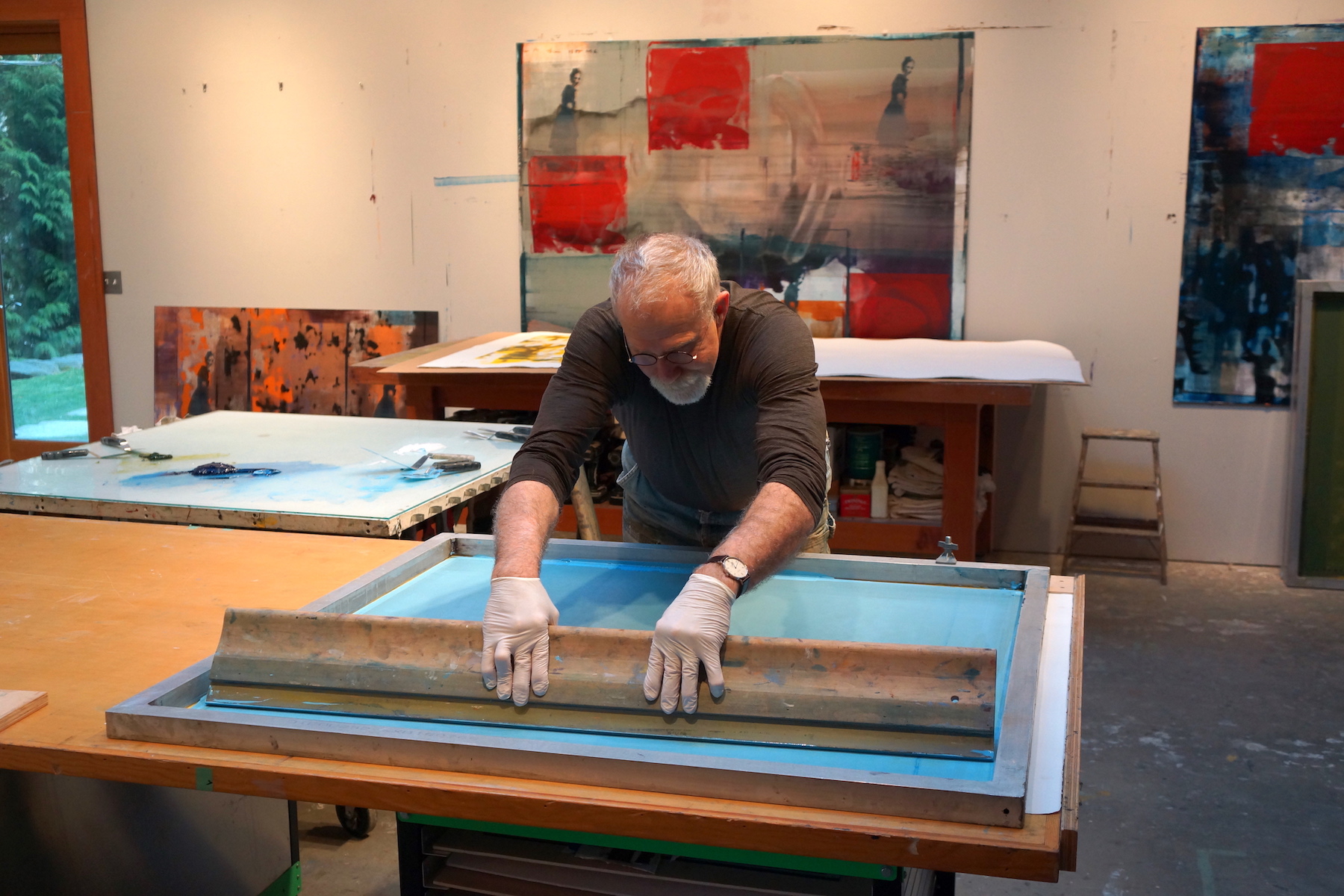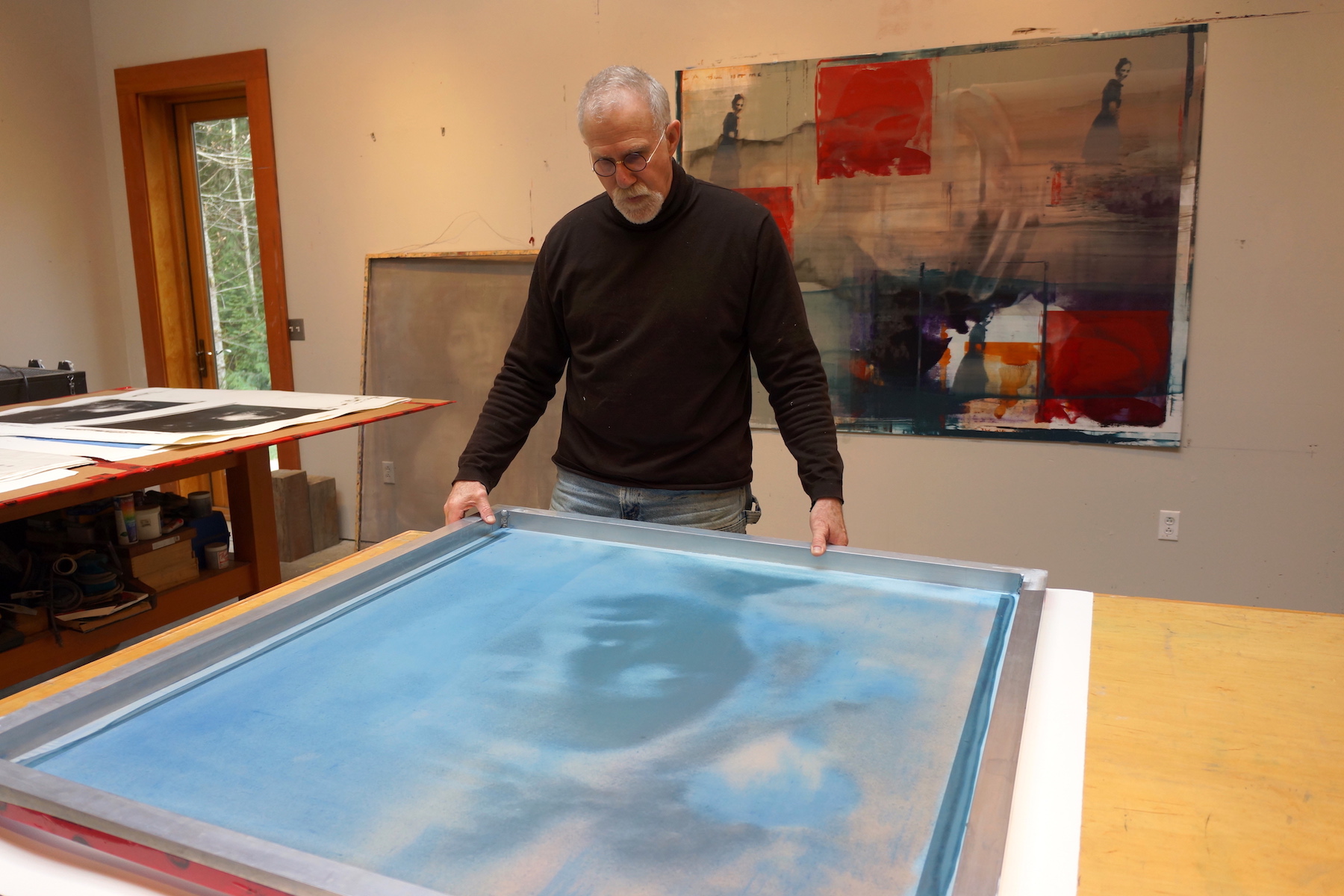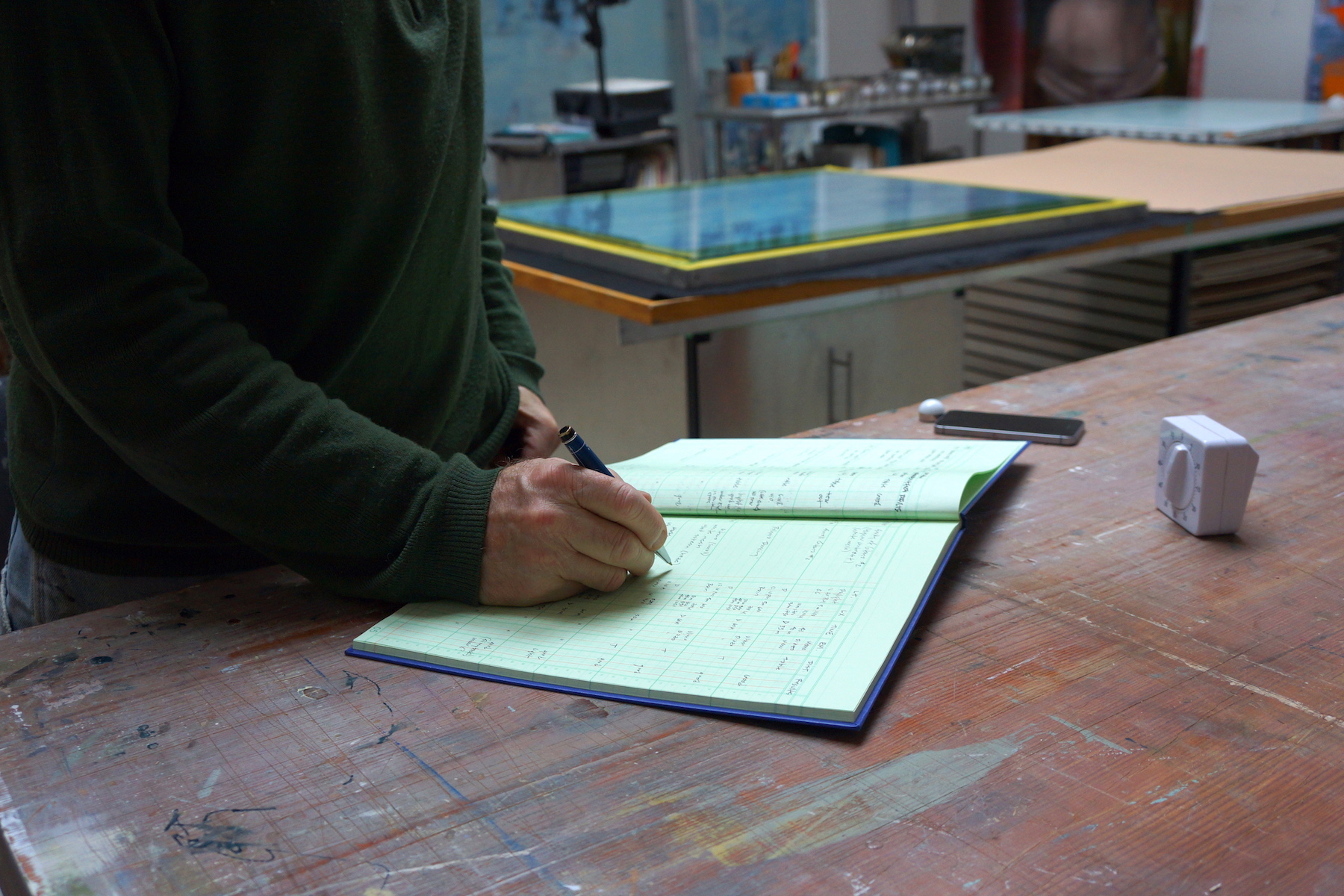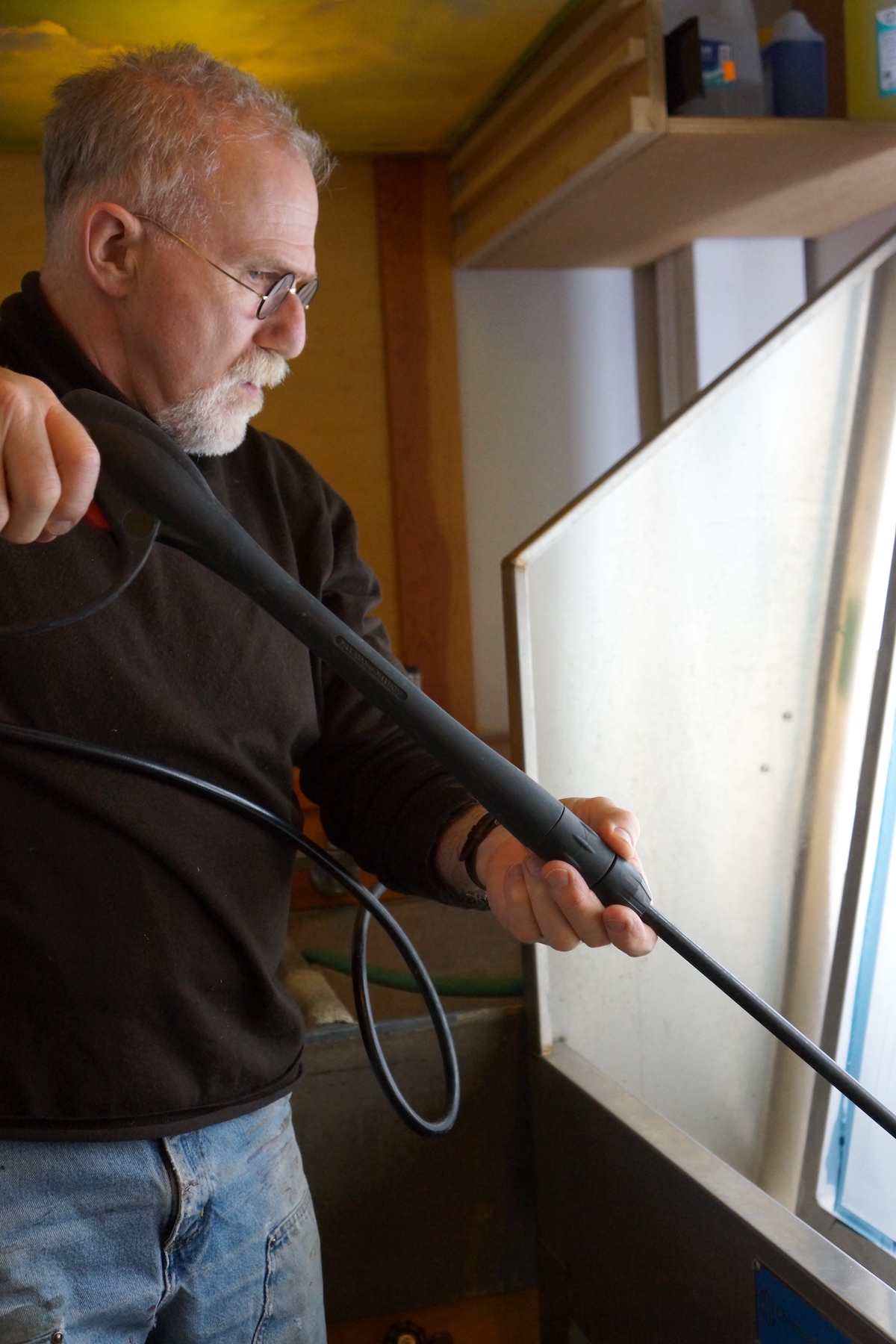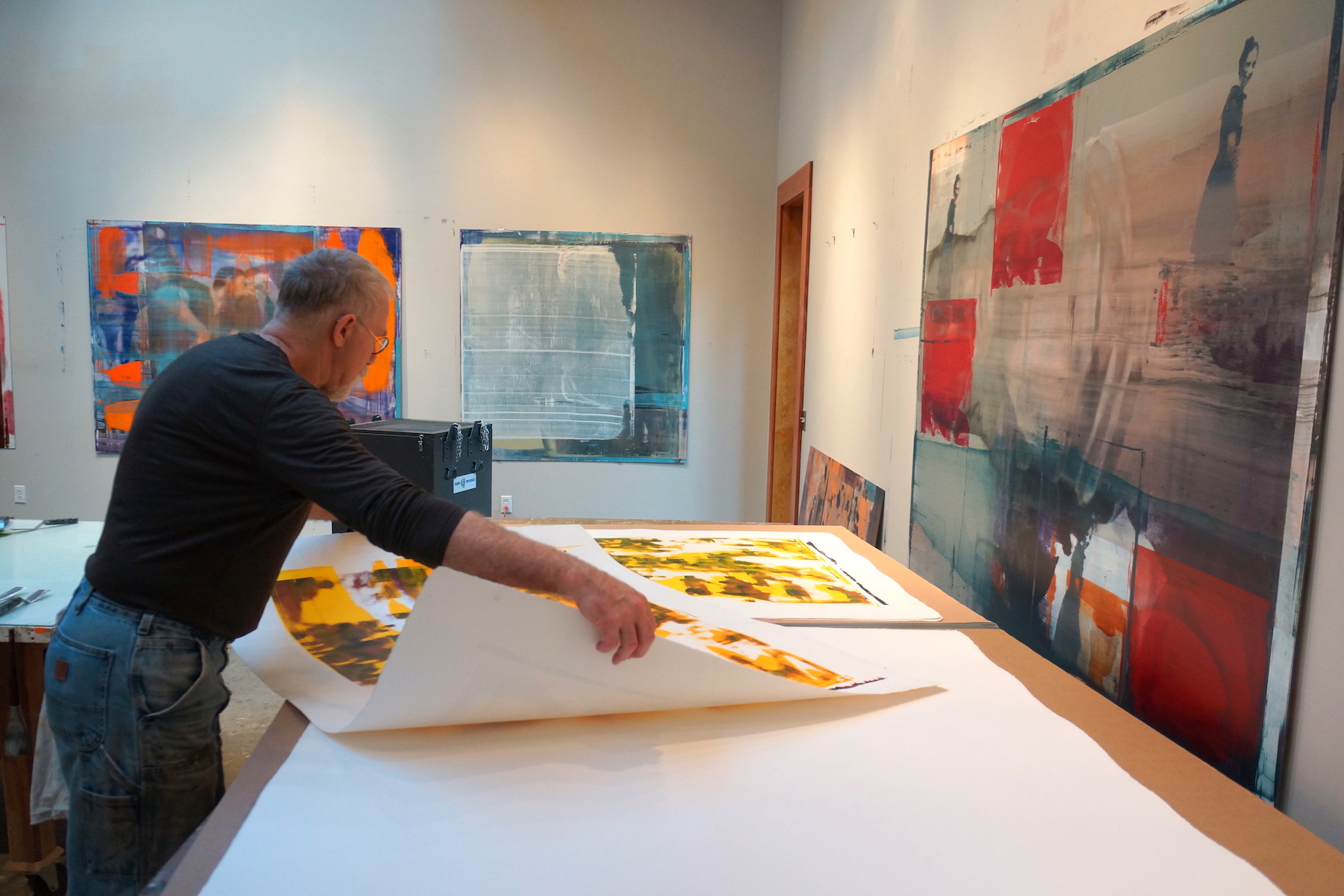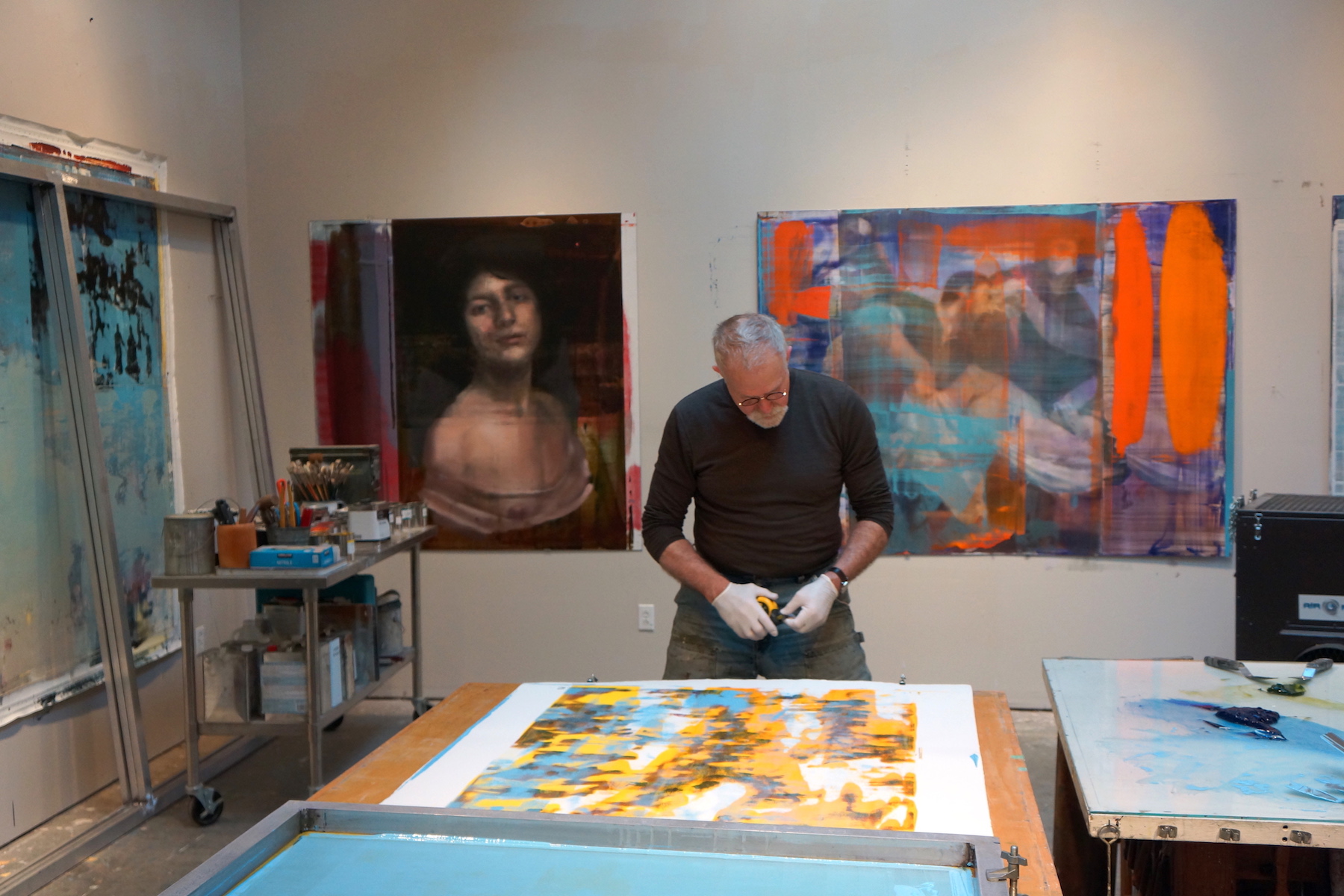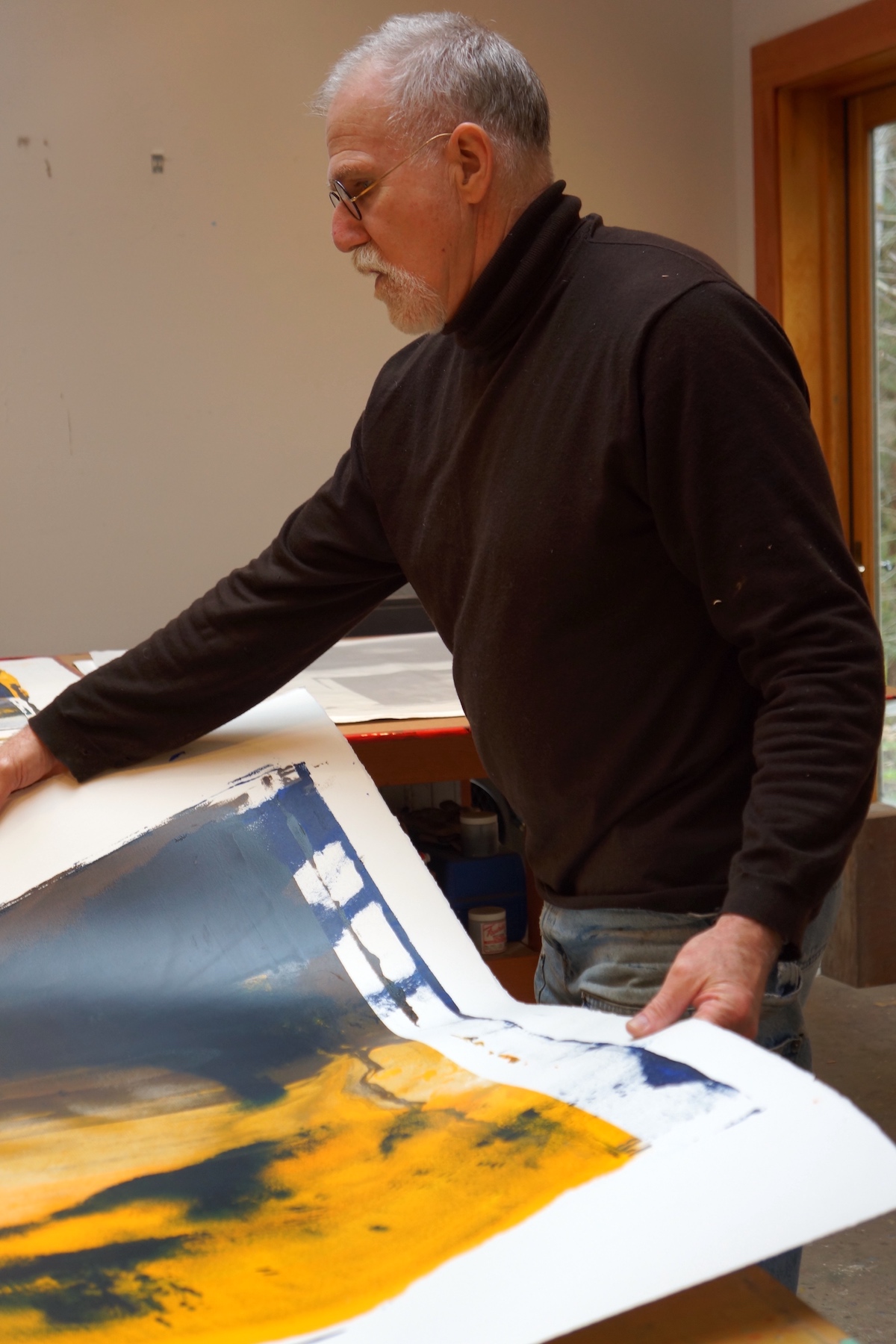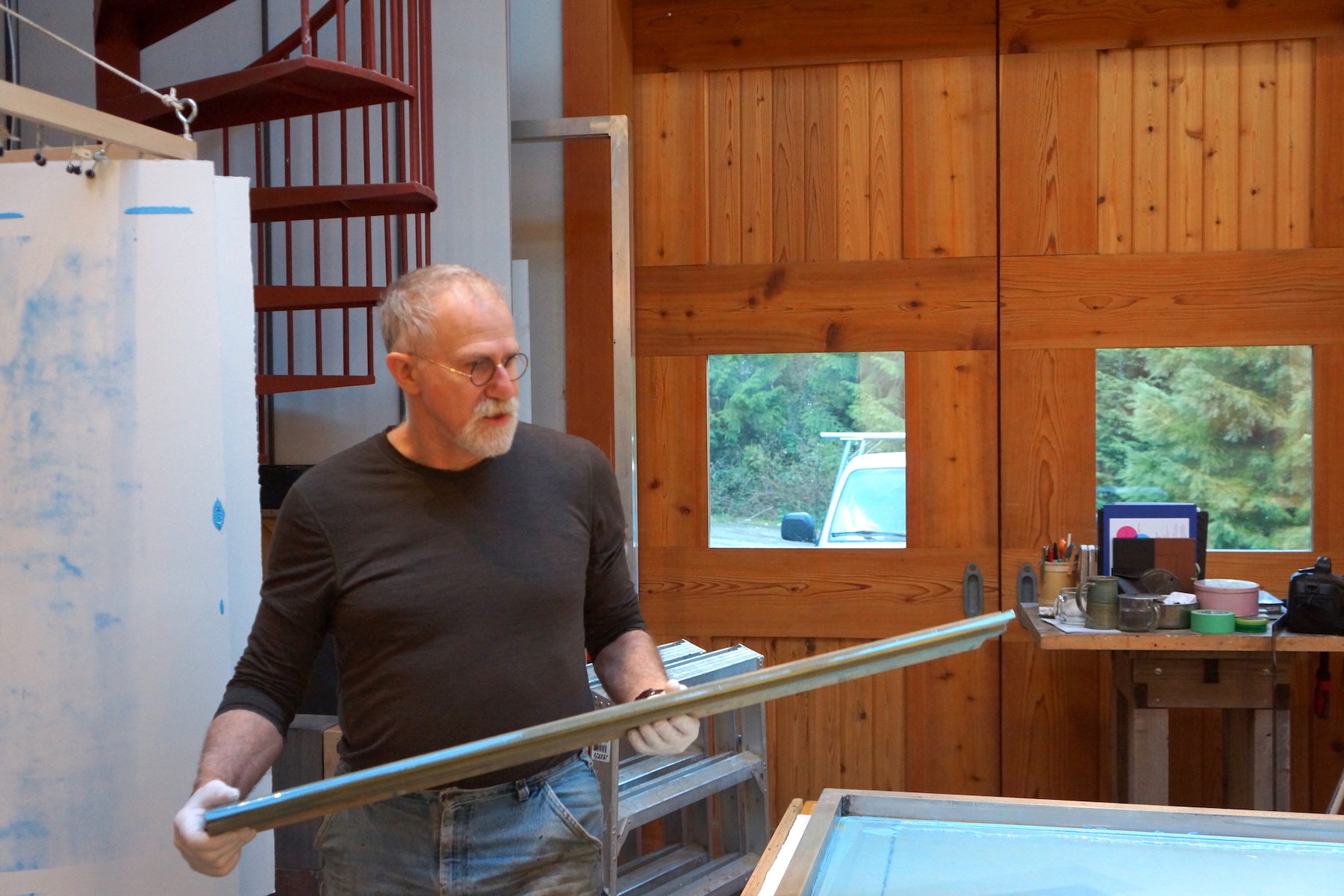Preface to Pentimento
by Lillian Hellman
"Old paint on canvas, as it ages, sometimes becomes transparent. When that happens it is possible, in some pictures, to see the original lines; a tree will show through a woman’s dress, a child makes way for a dog, a large boat is no longer on an open sea. That is called pentimento because the painter 'repented,' changed his mind. Perhaps it would be as well to say that the old conception, replaced by a later choice, is a way of seeing and then seeing again."
Works on Linen and Canvas
I have developed a kind of hybrid process combining printing and painting. I paint with oil on linen, stretched across a panel. I hang a piece of fiberglass screen in front of the painting and paint through the screen. When I remove the screen from the surface, there is enough paint on the screen for me to transfer the image to another part of the painting or to another painting. Hence, the multiple images and repeated forms. I use squeegees to move the paint around, both through the screen and directly on the wet surface, which can make visible the physical nature of the process.
Buller prepping his stretched Linen surfaces with Rabbit Skin glue.
Buller using his squeegee to push paint through a fiberglass screen on Linen.
Evolution of a Painting
Buller I 2013 I Moving the Barrels I Oil on Linen on Panel I 48x168"
Equilibrium, strength, endurance; all required to lift and carry these barrels filled with beer. The history of Cincinnati is entwined with the breweries and with the communities that formed around and amongst them. This painting is a salute to the workers who made it all possible.
Evolution of a Painting
Buller I 2015 I Drift I Oil on Linen on Panel I 72x120"
Evolution of Works on Paper
Philip at Retreat Cove Studio, Galiano Island, BC
THINGS TO TELL MYSELF ON RESOLVING A PAINTING
1. Stay physical with the painting.
2. Be careful only in a perverse way.
3. Try to hold curiosity more than fear.
4. Commit to decisions and follow them despite doubt. Then evaluate them.
5. Resist “tidying up” the painting.
6. Feel rather than think.
7. Continue to search in order to find other than what is searched for. Allow the painting to continue to evolve in it’s unique direction.
8. Tolerate chaos.
9. Use every trick in the book.
10. Trust that meaning will appear, but know that it can’t be forced.
Philip and his partner Janet Adler in studio
Buller squeegeeing a Work on Paper
Buller checking a Work on Paper

